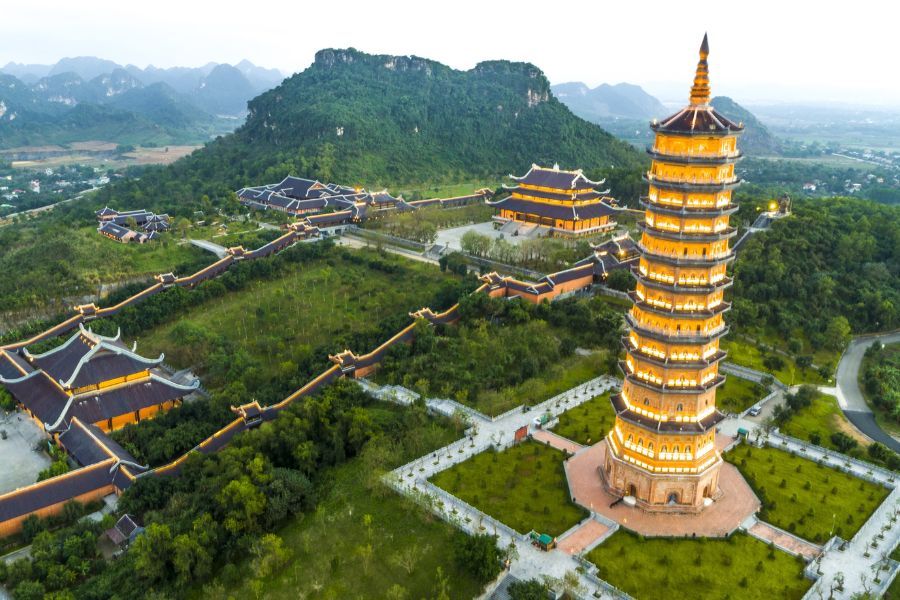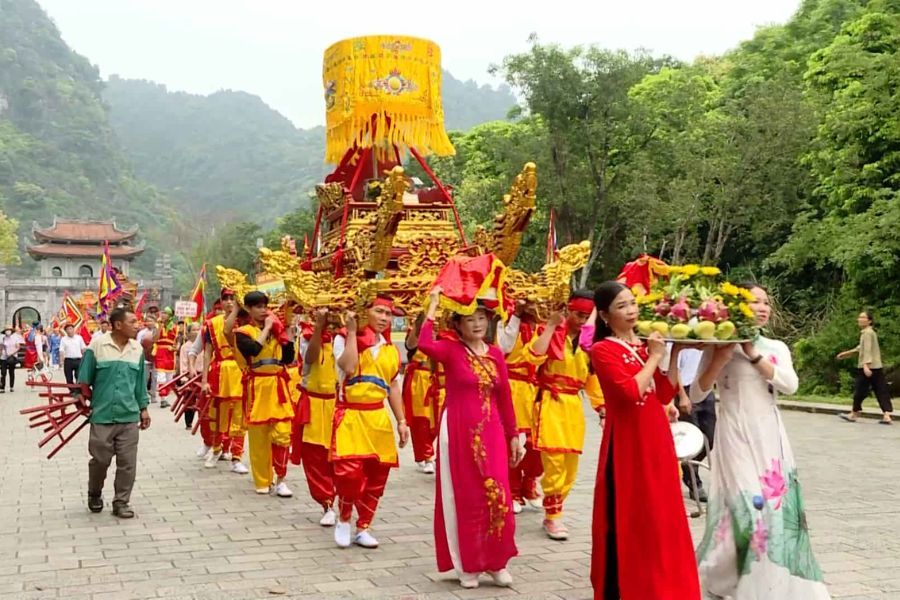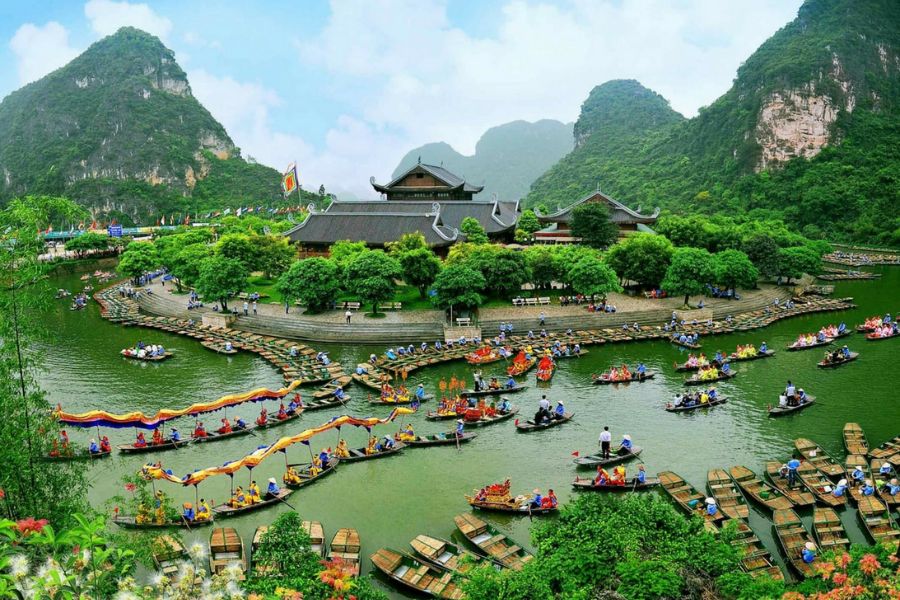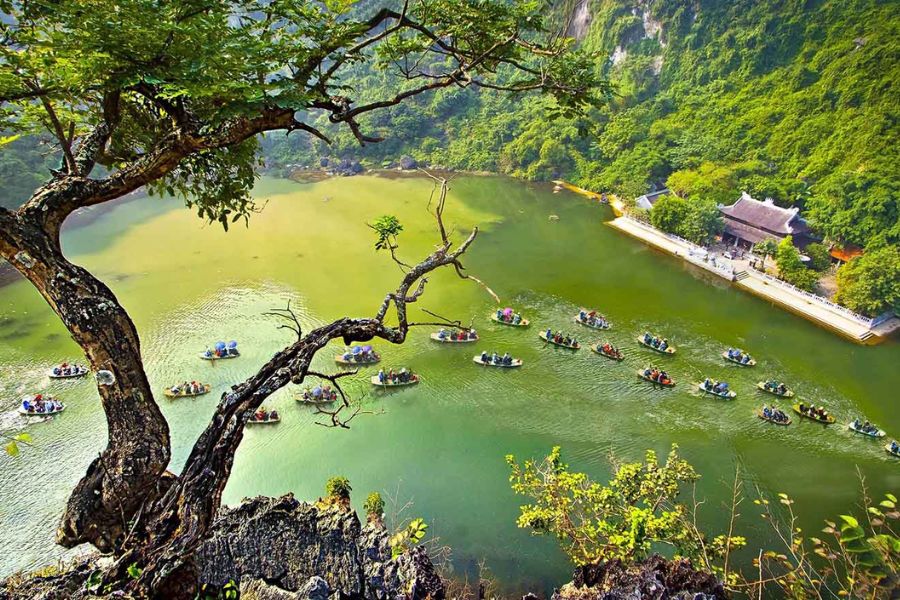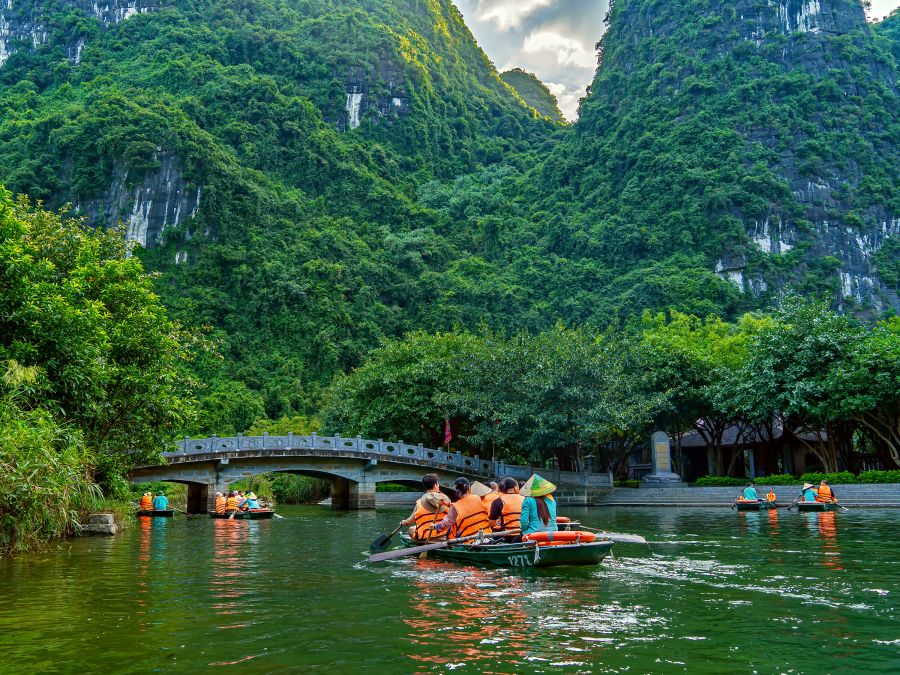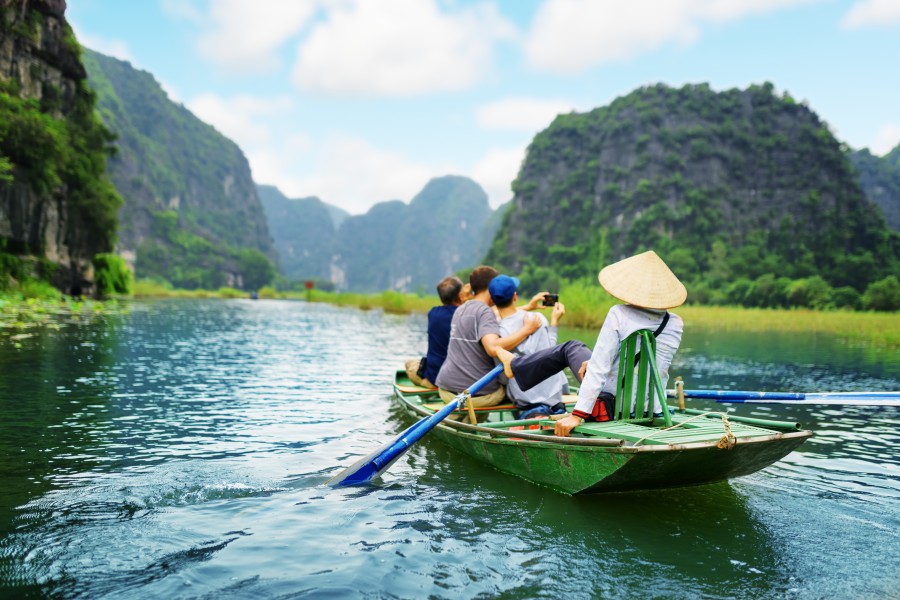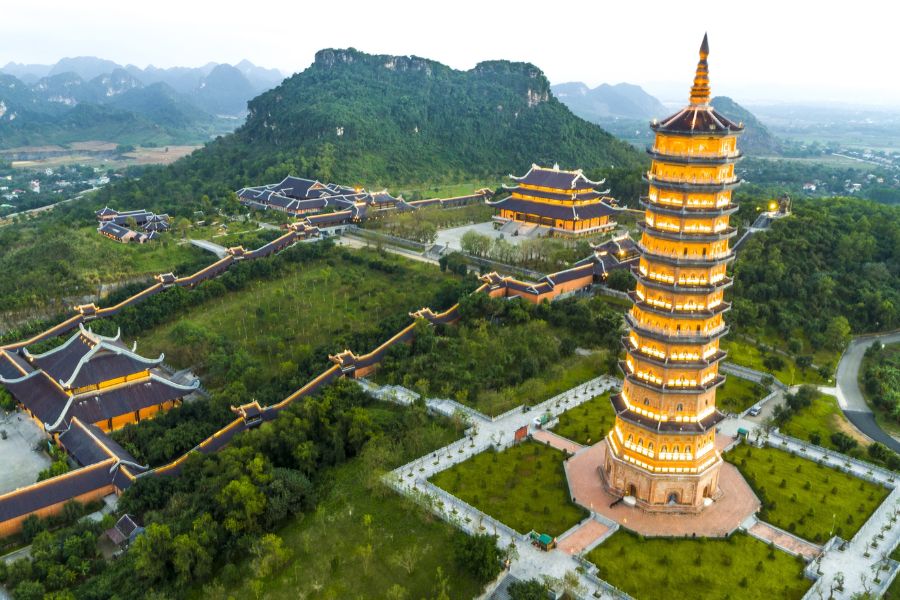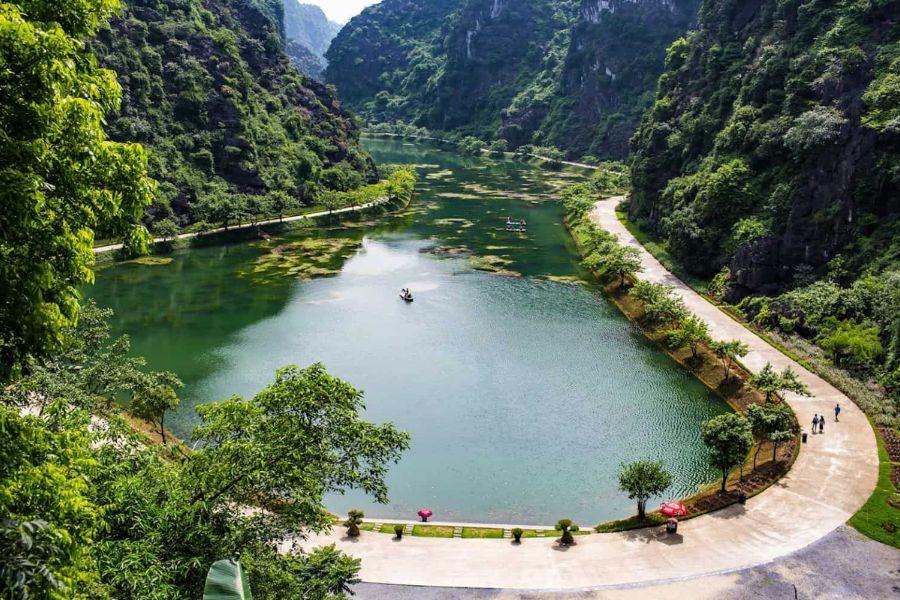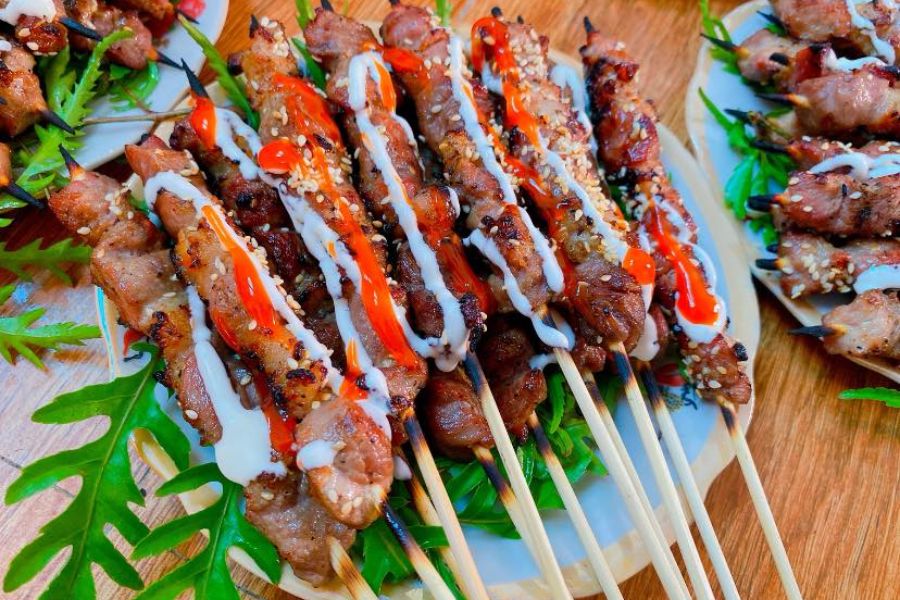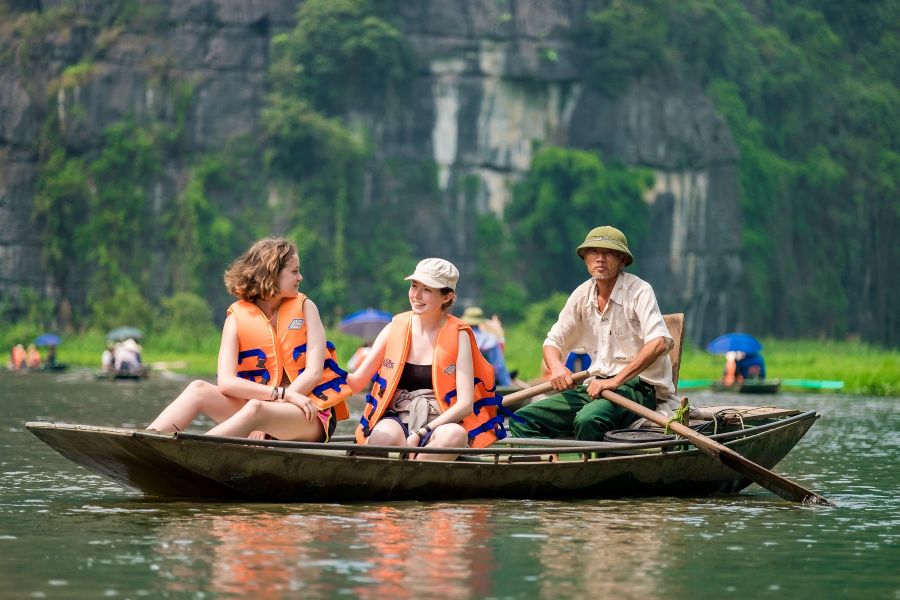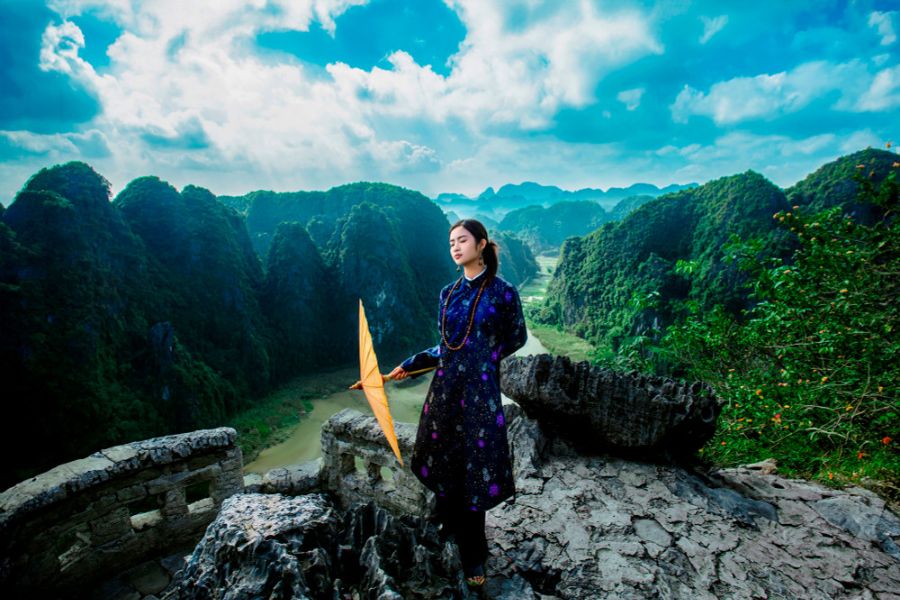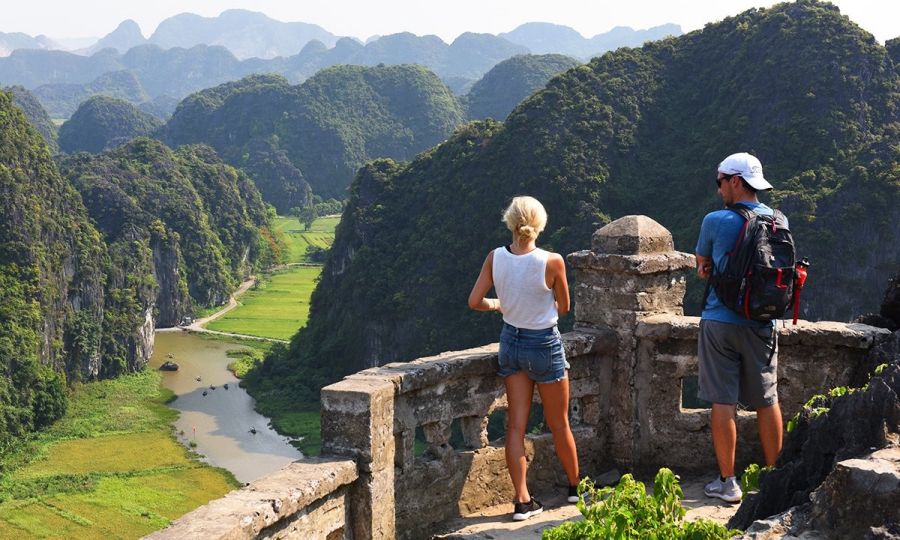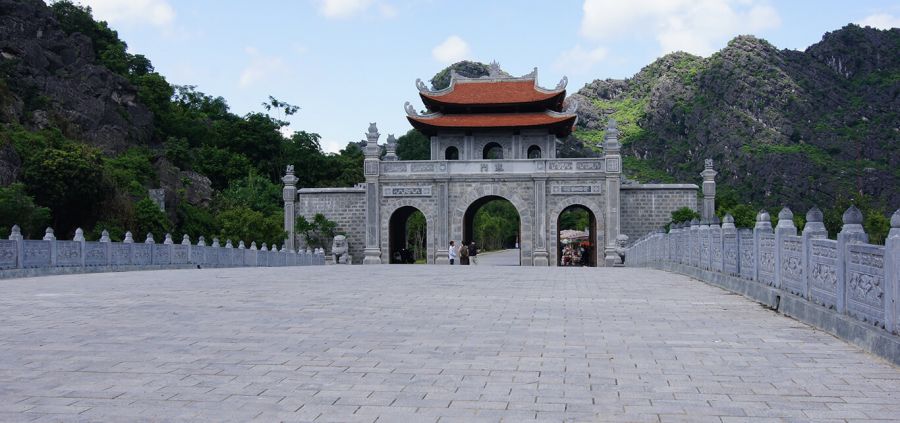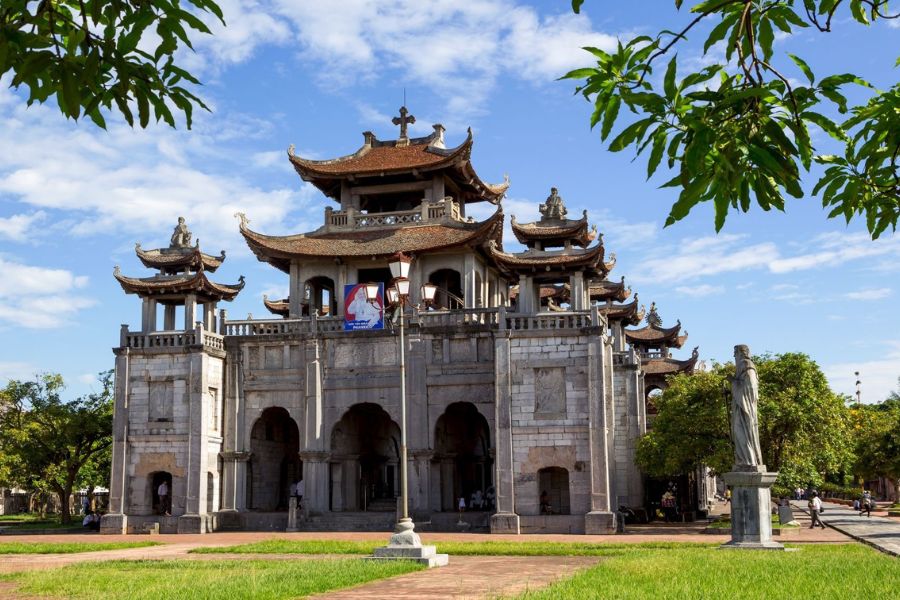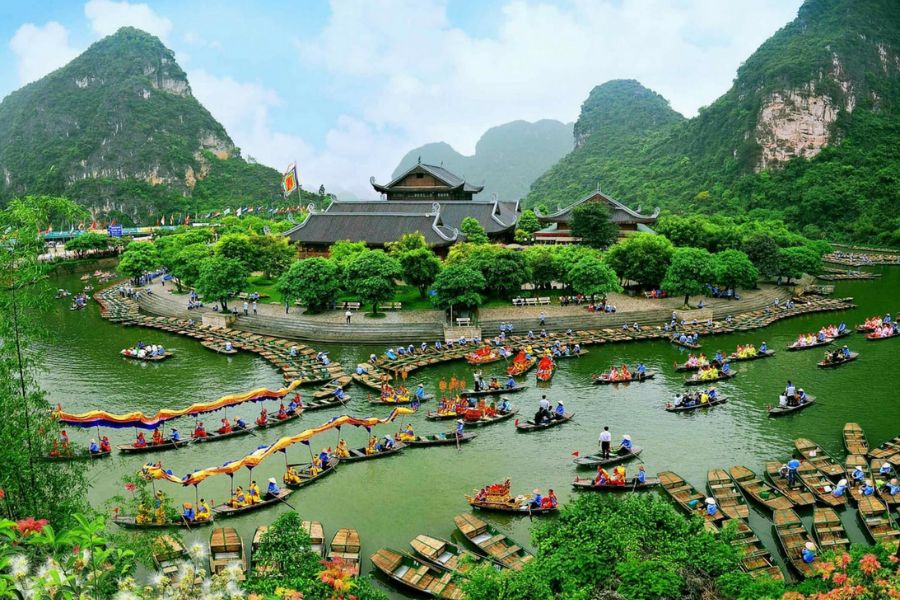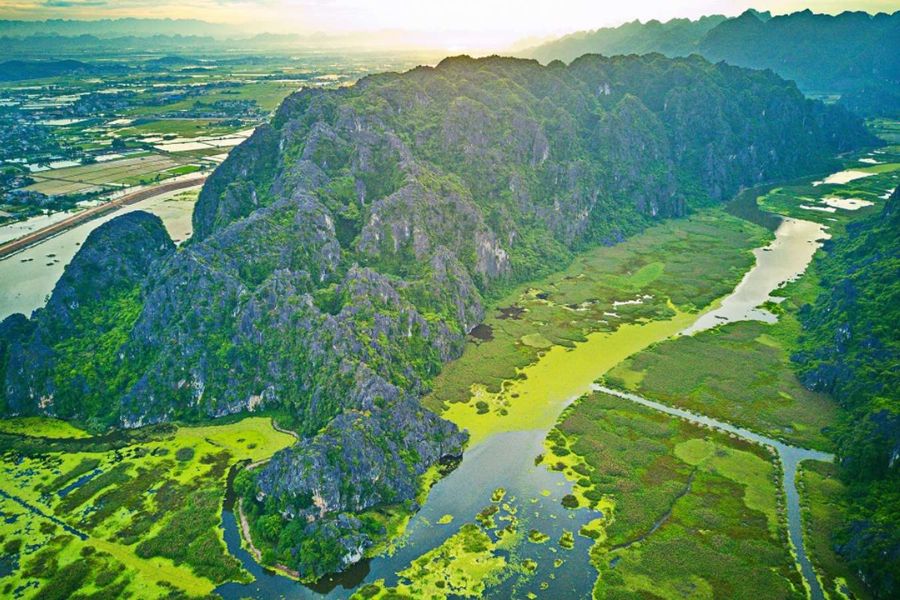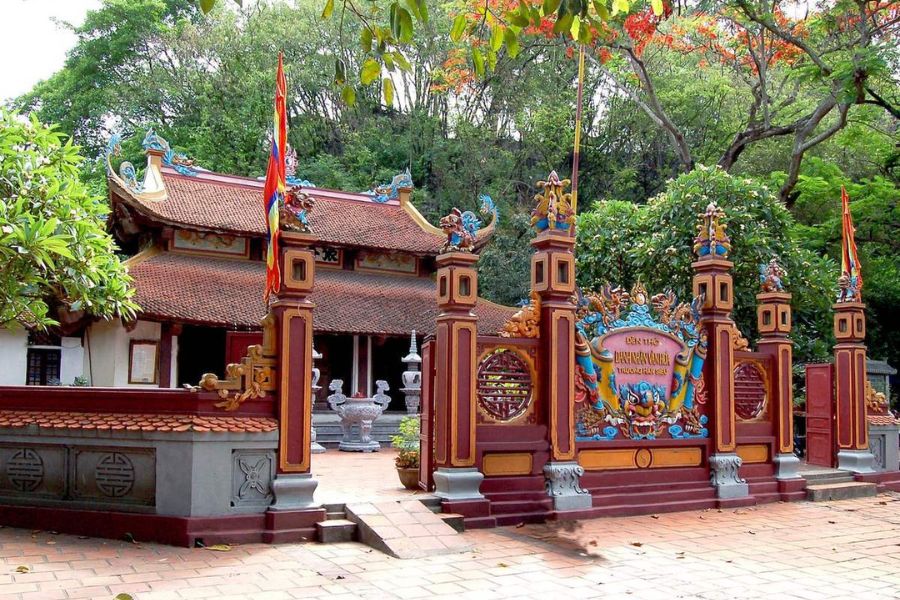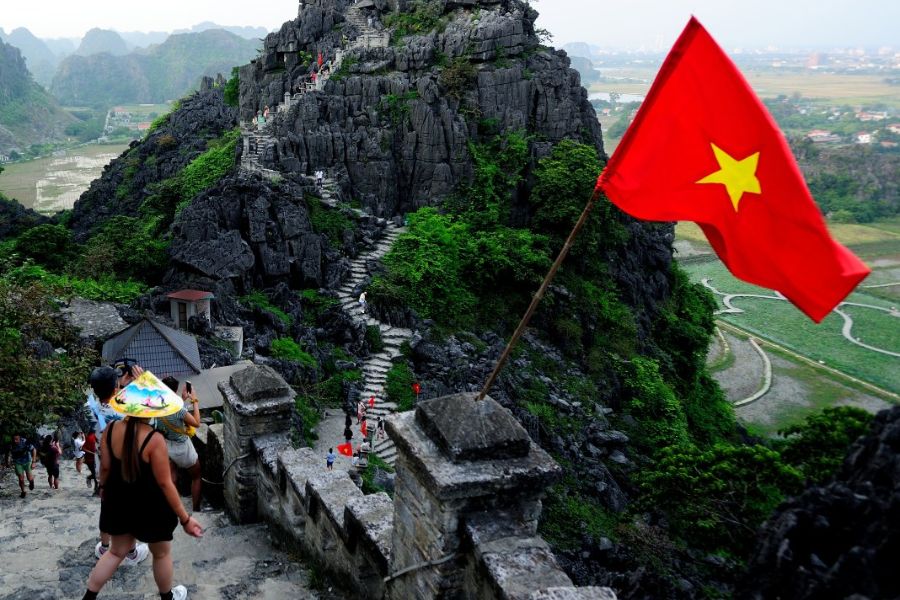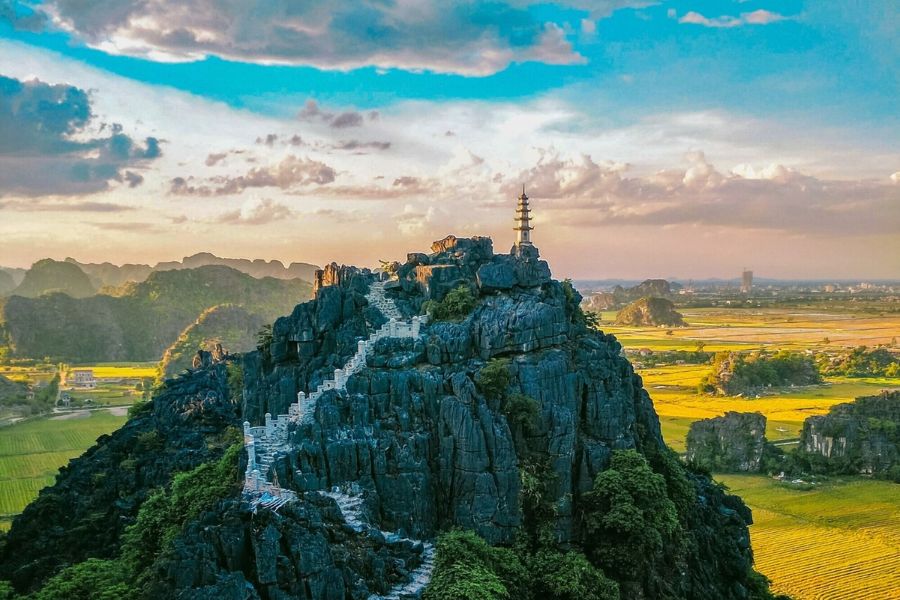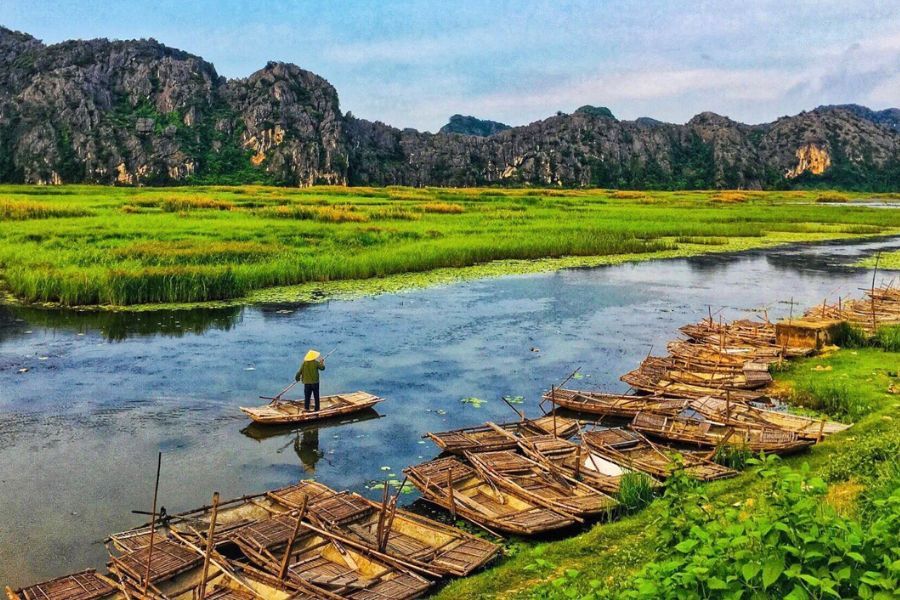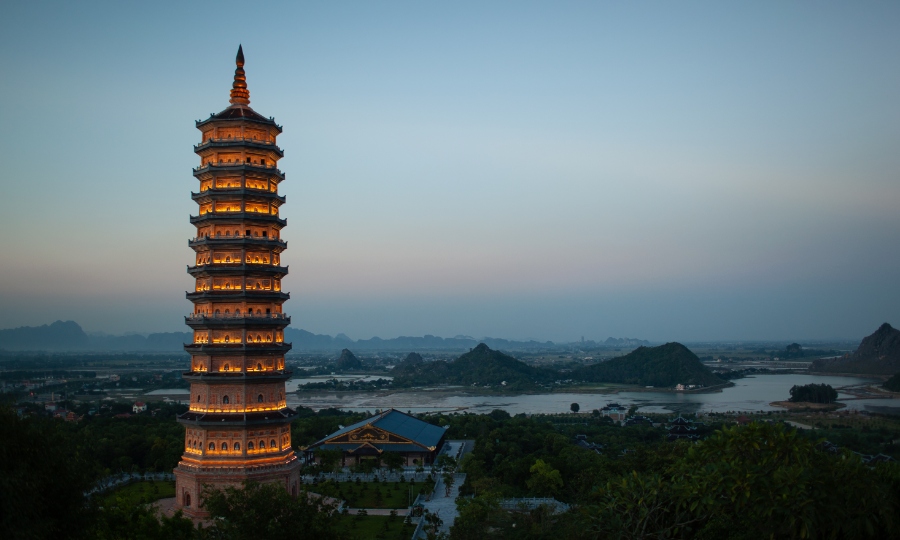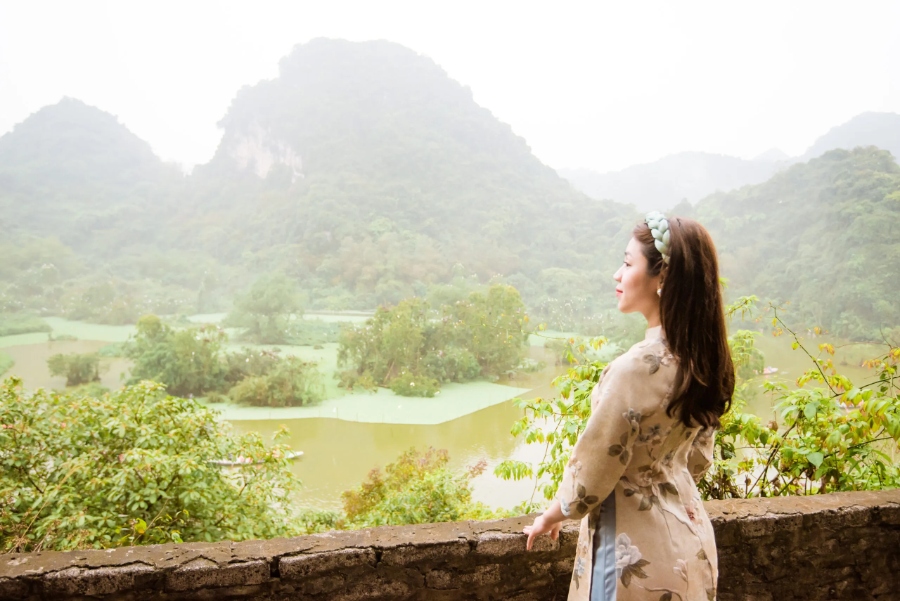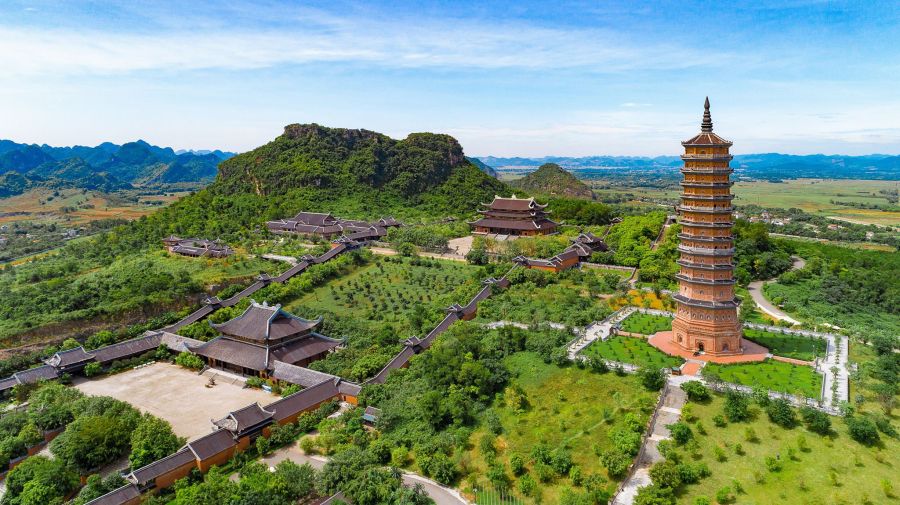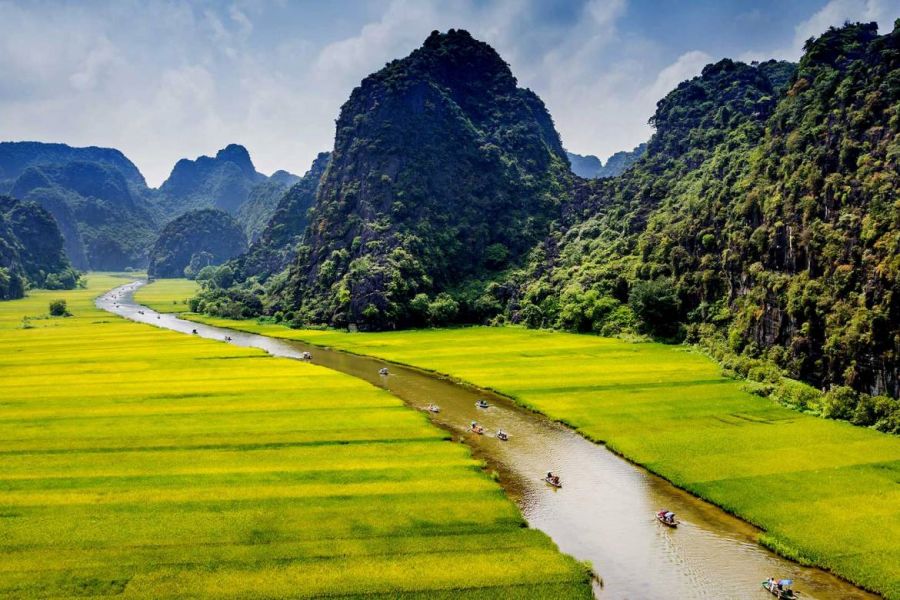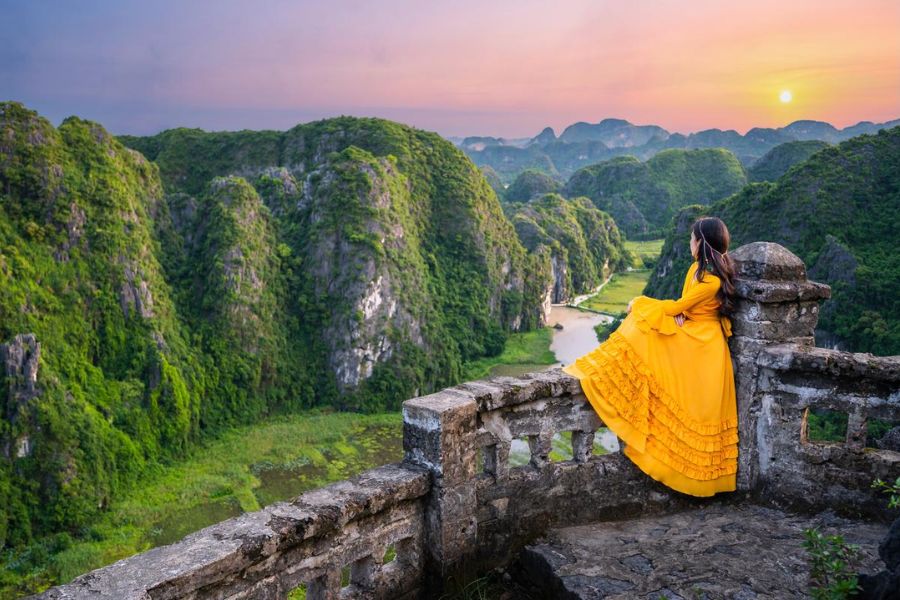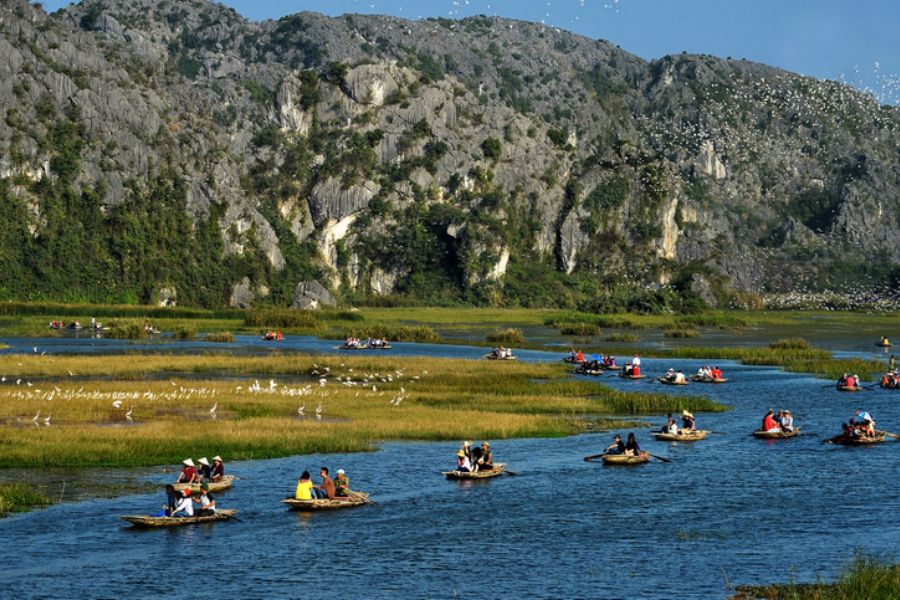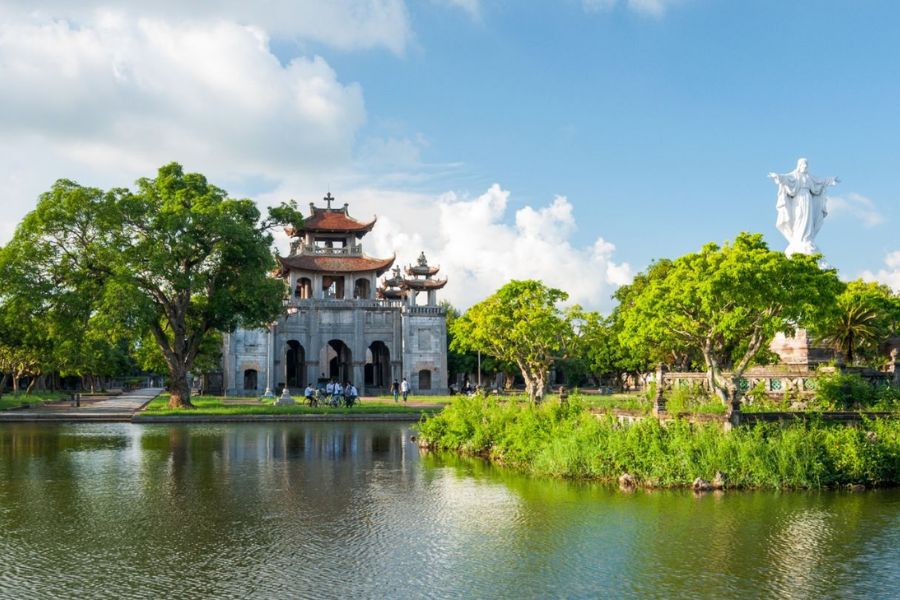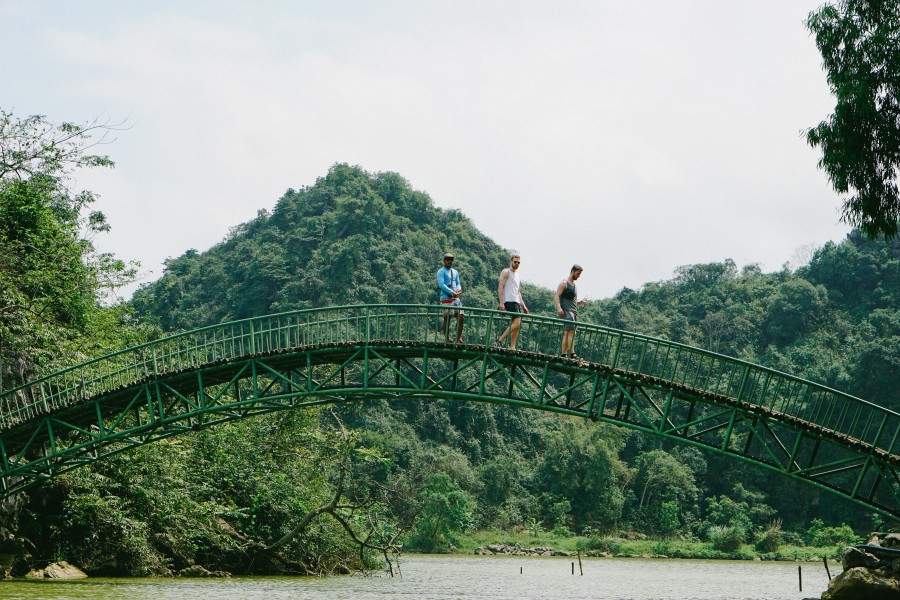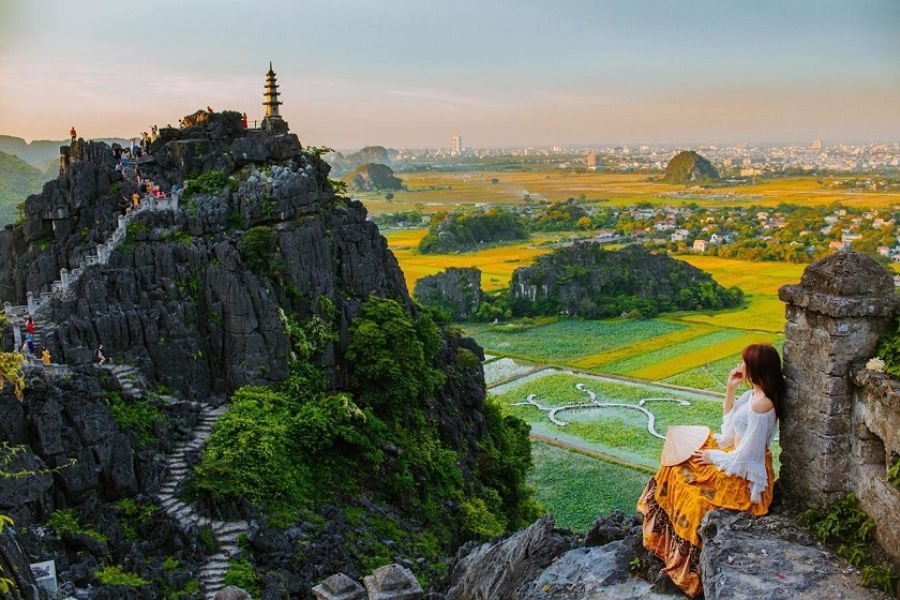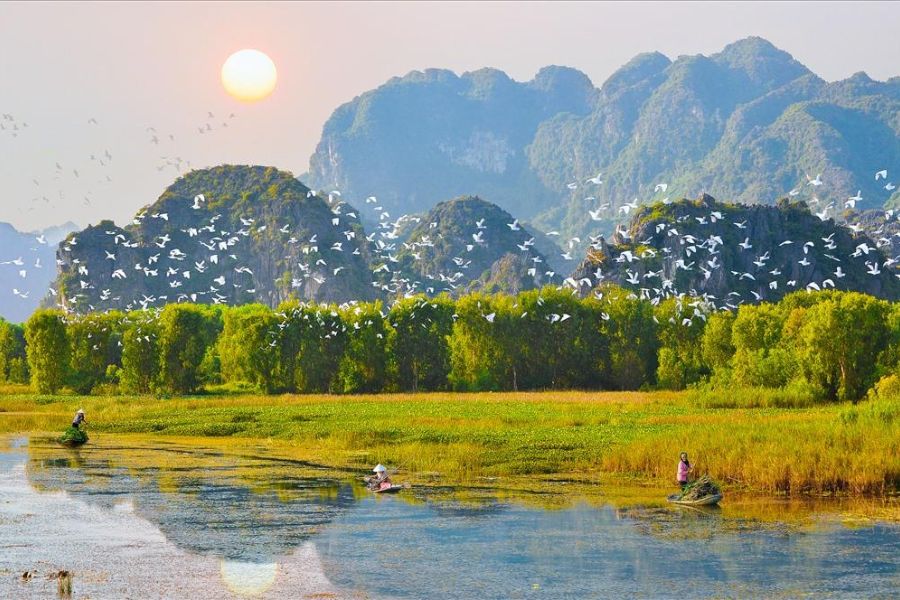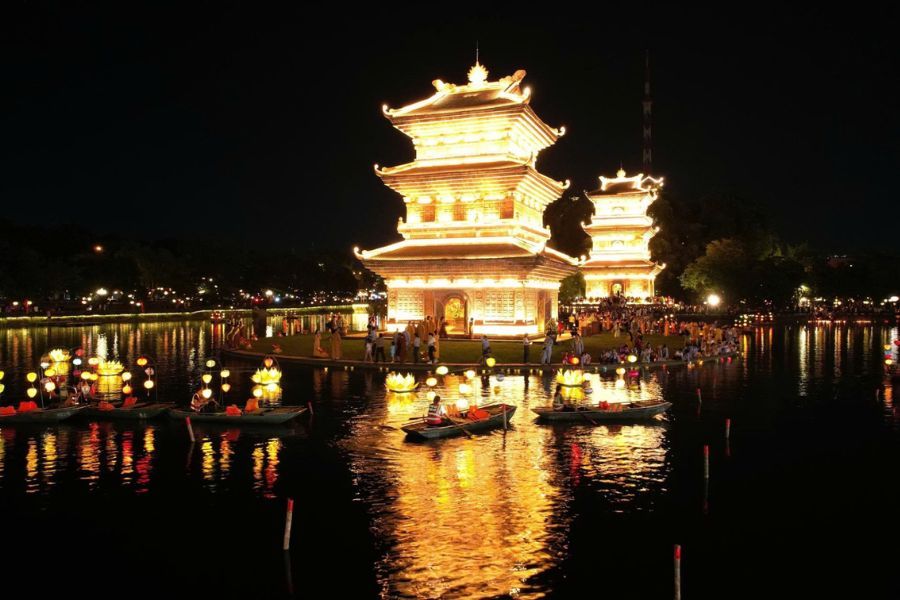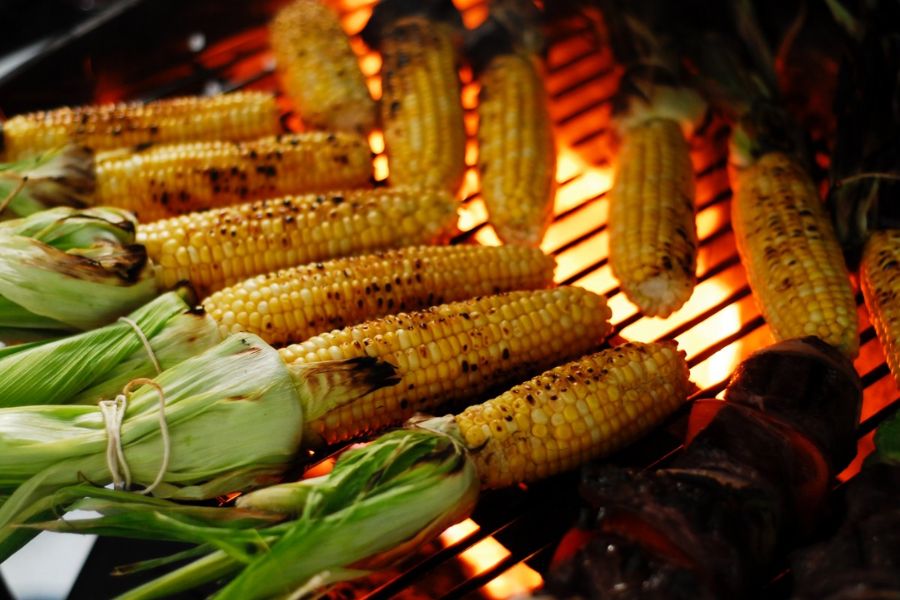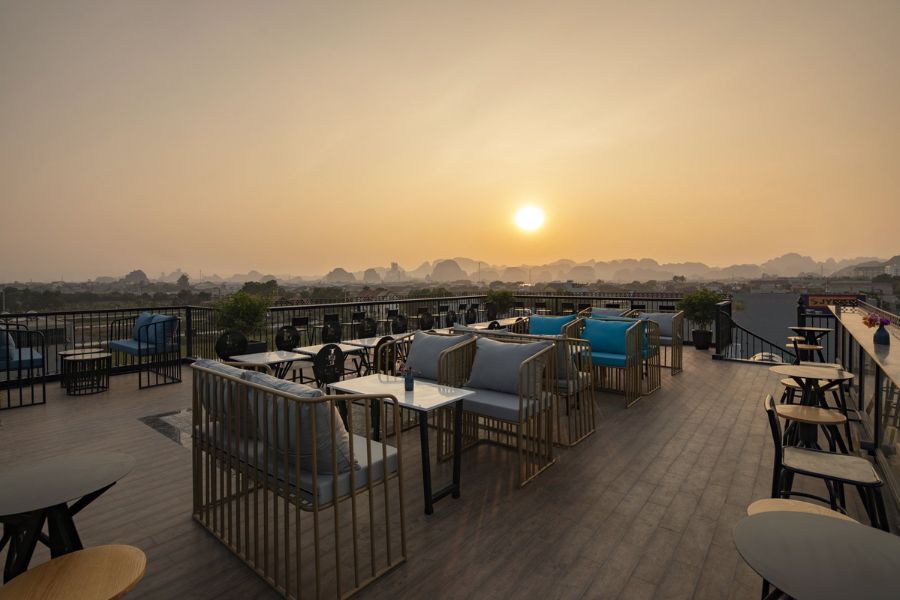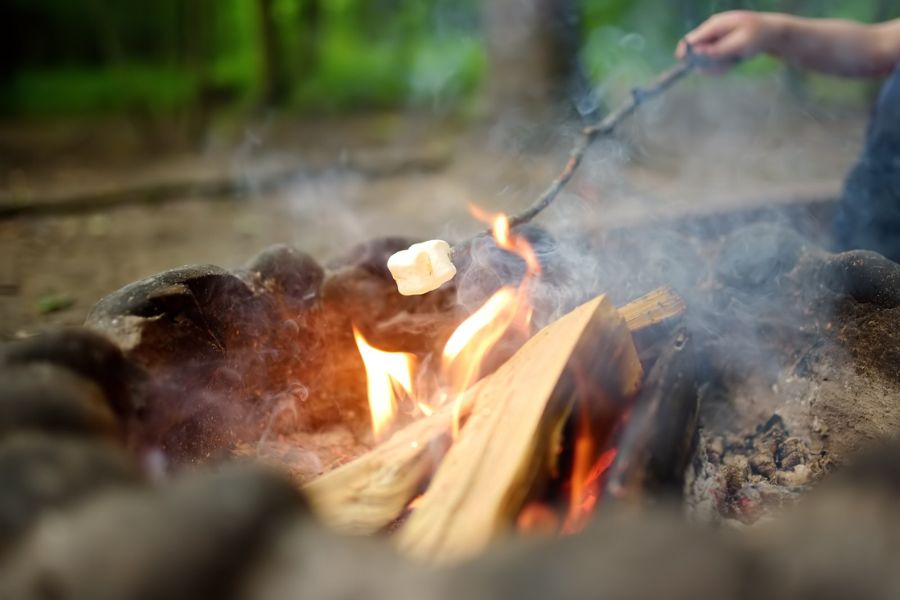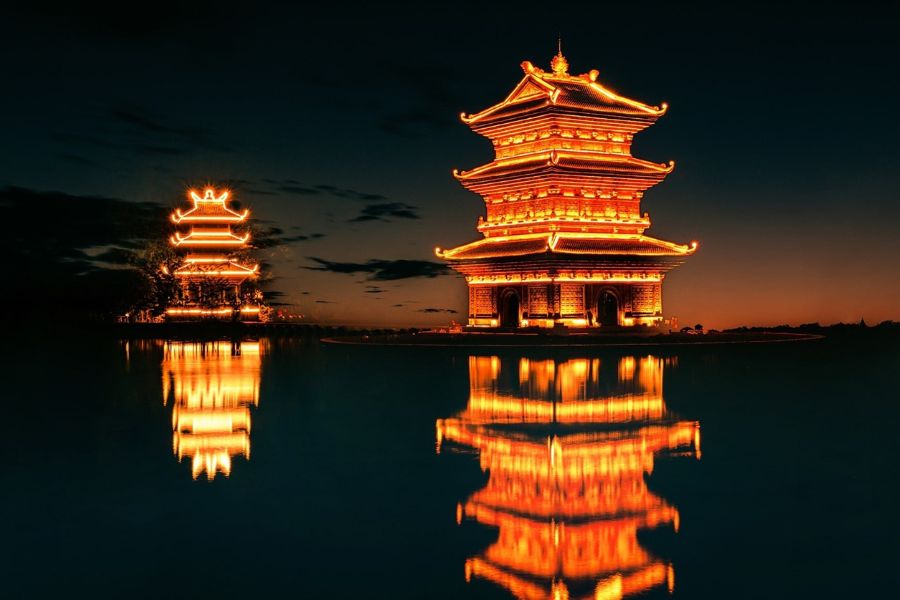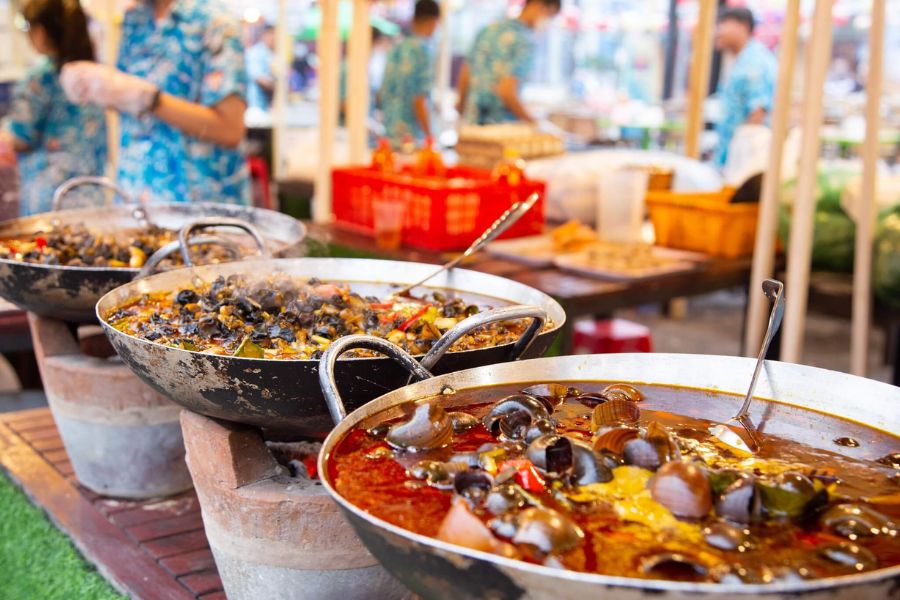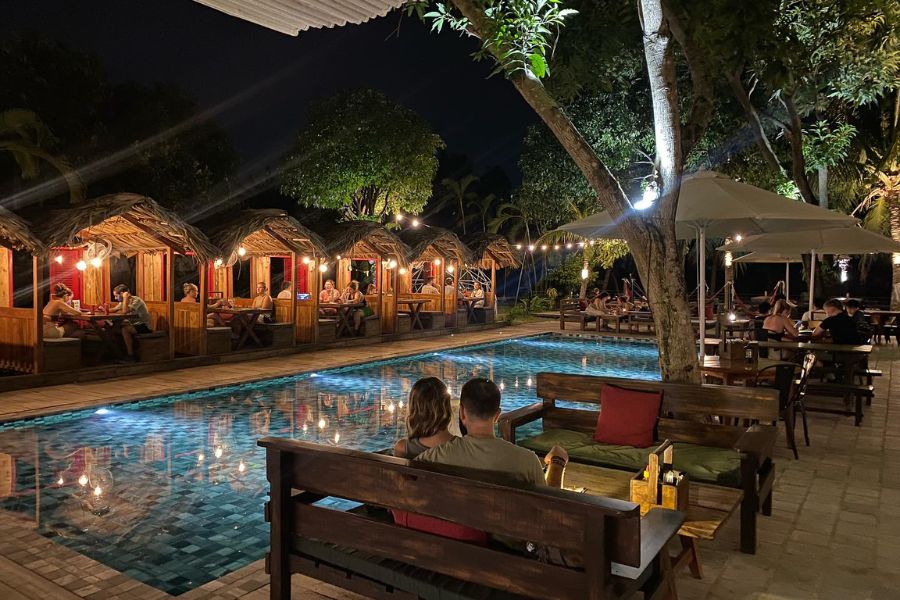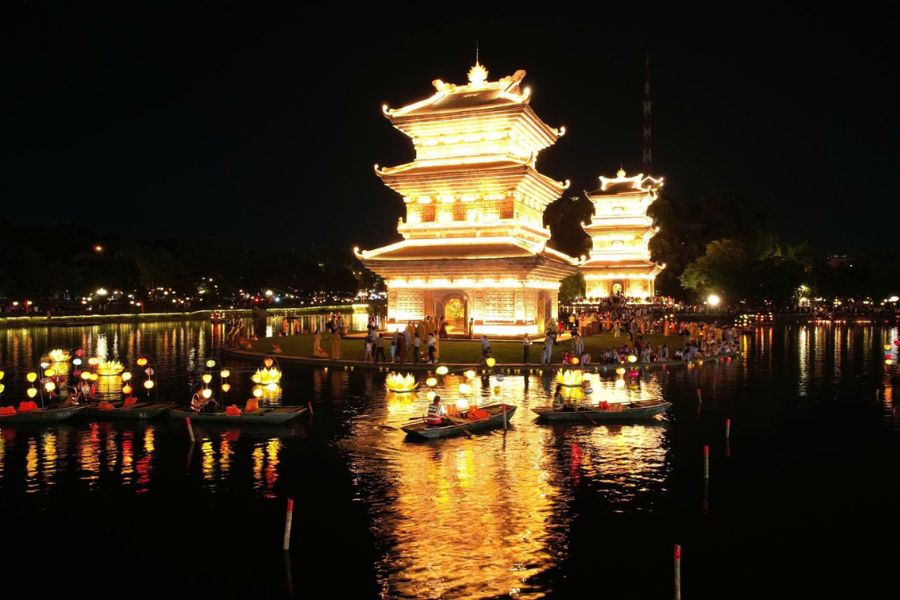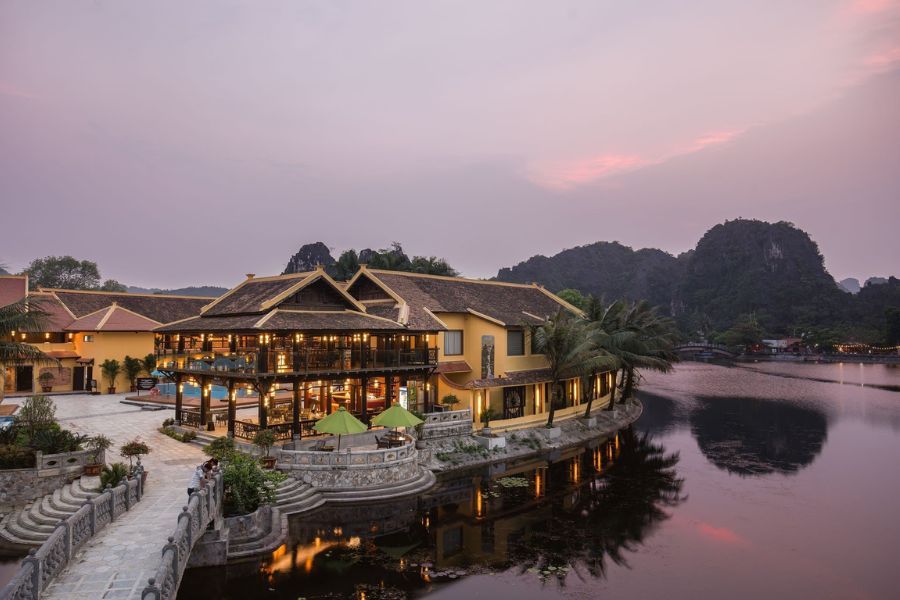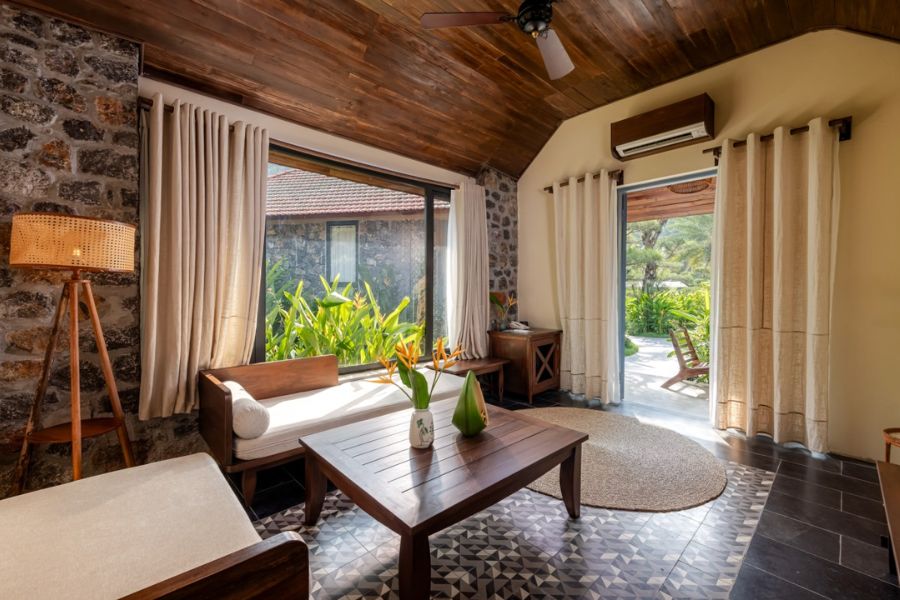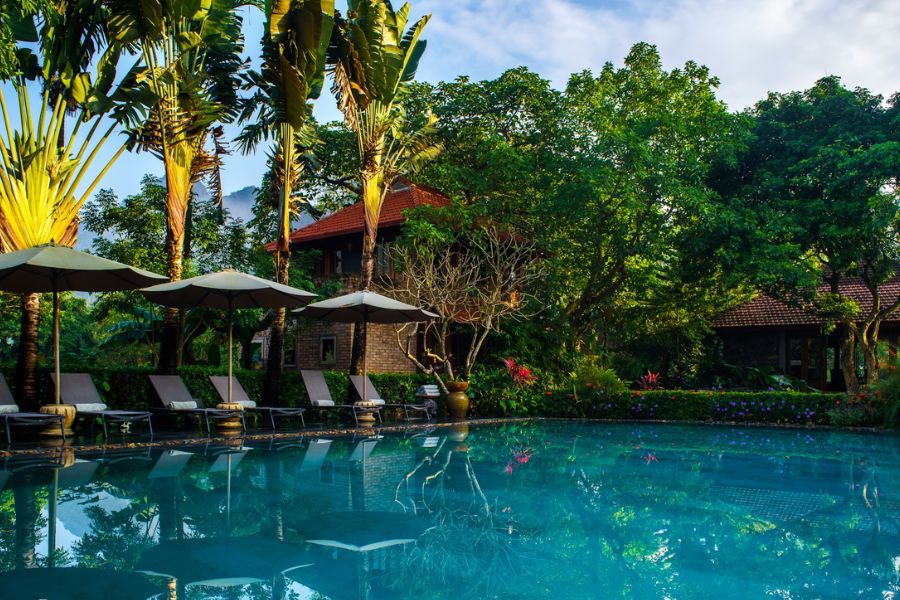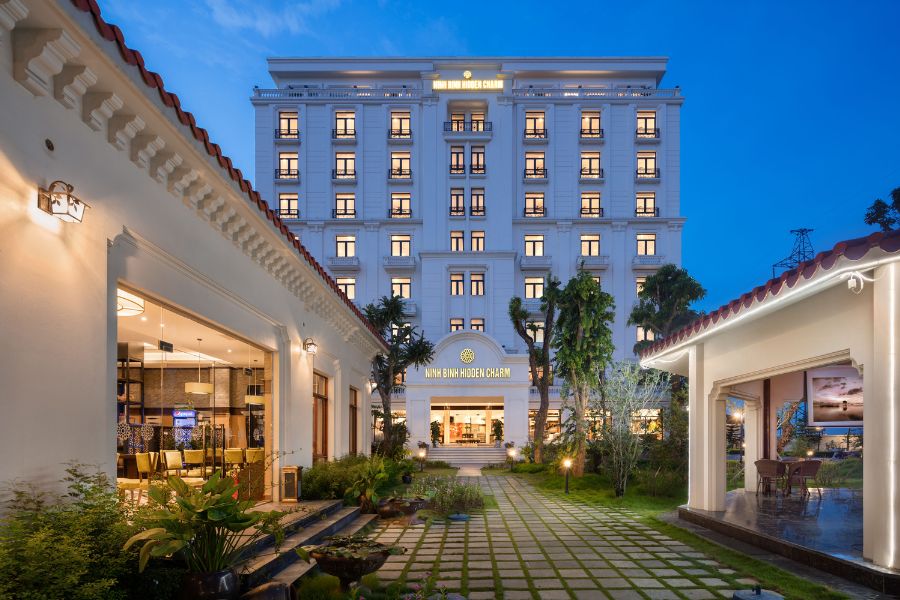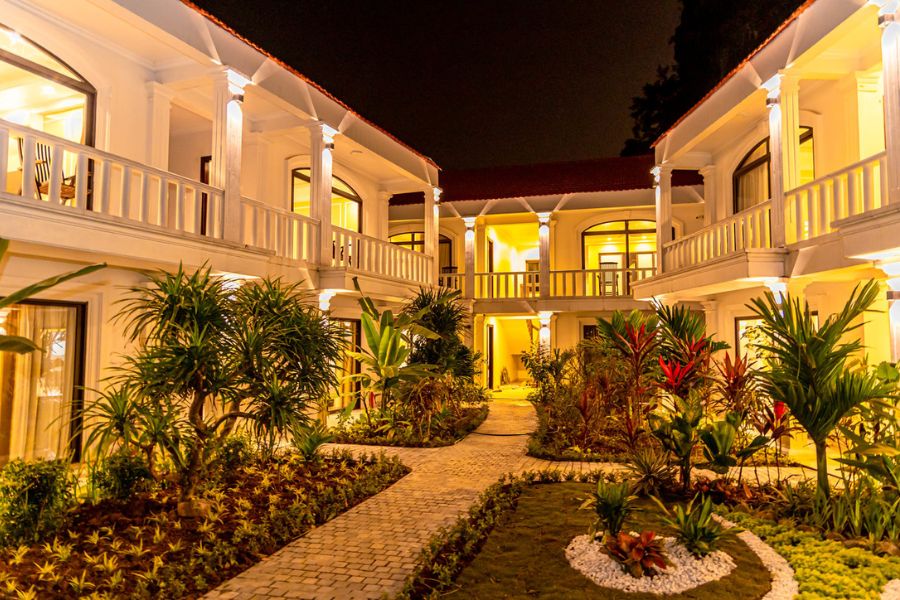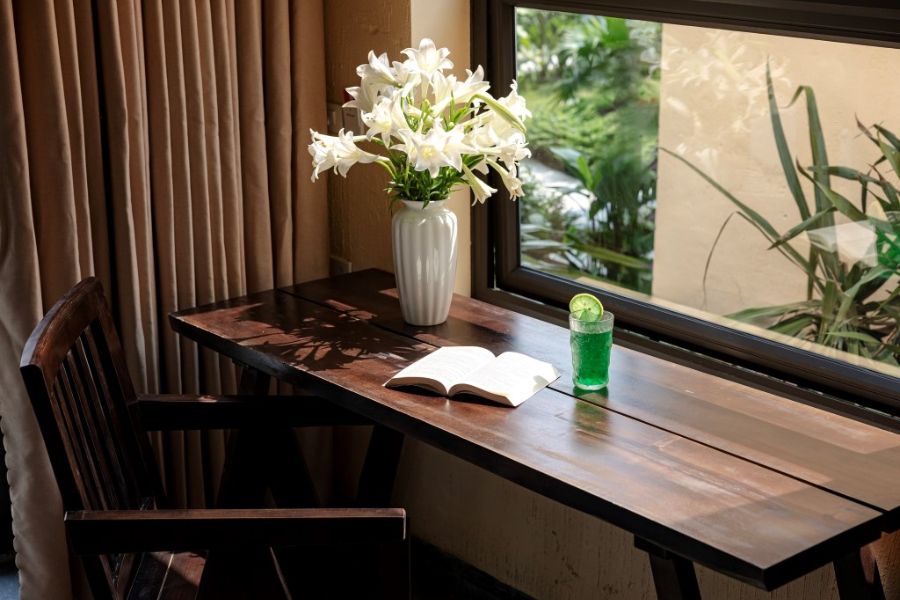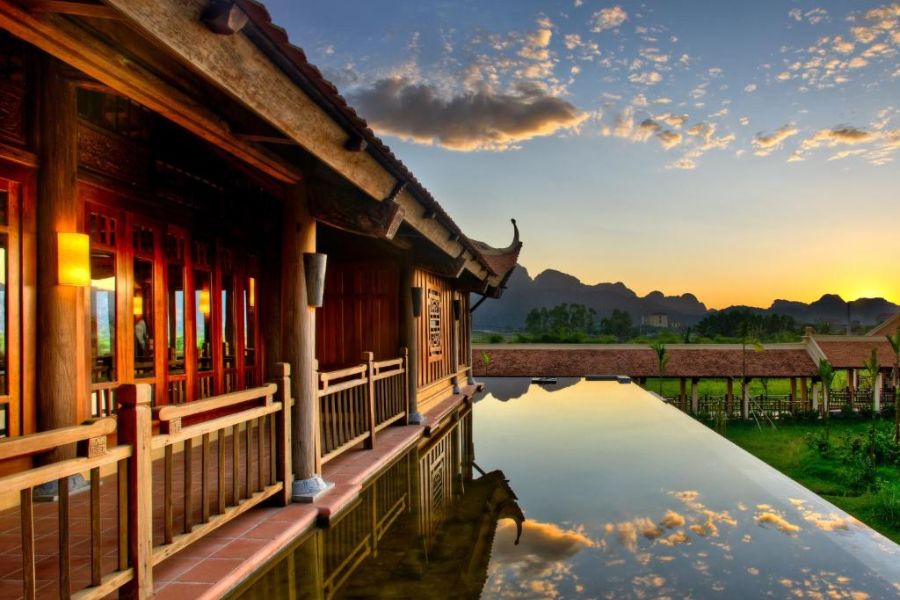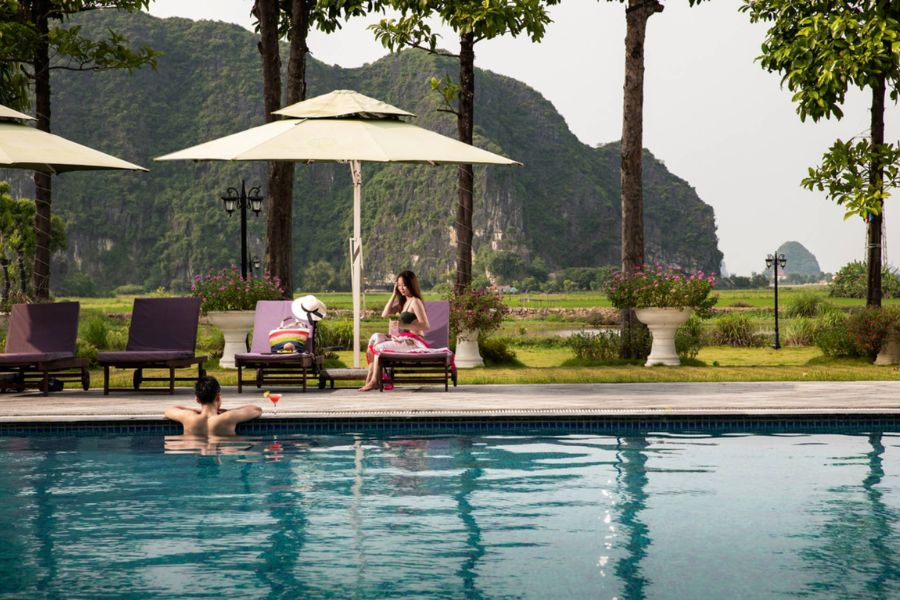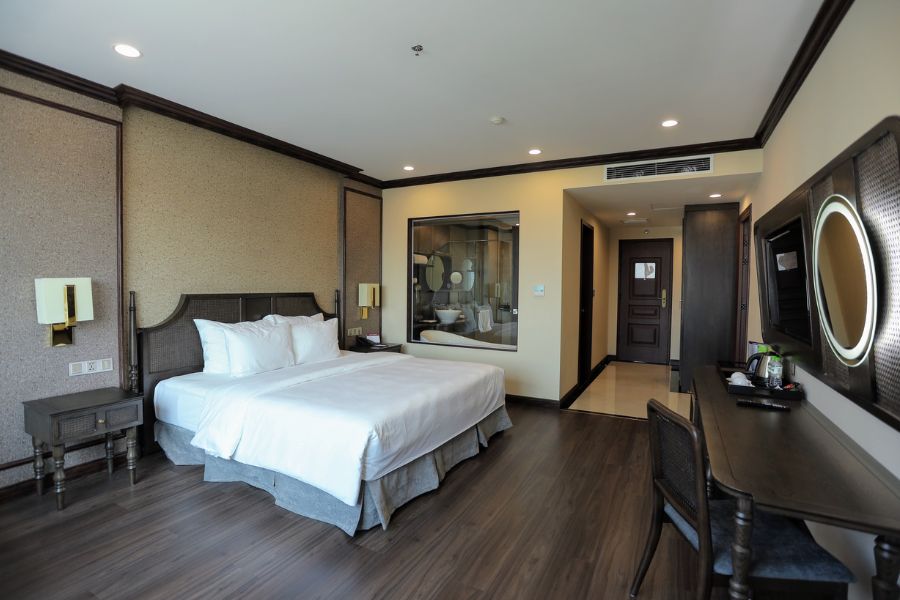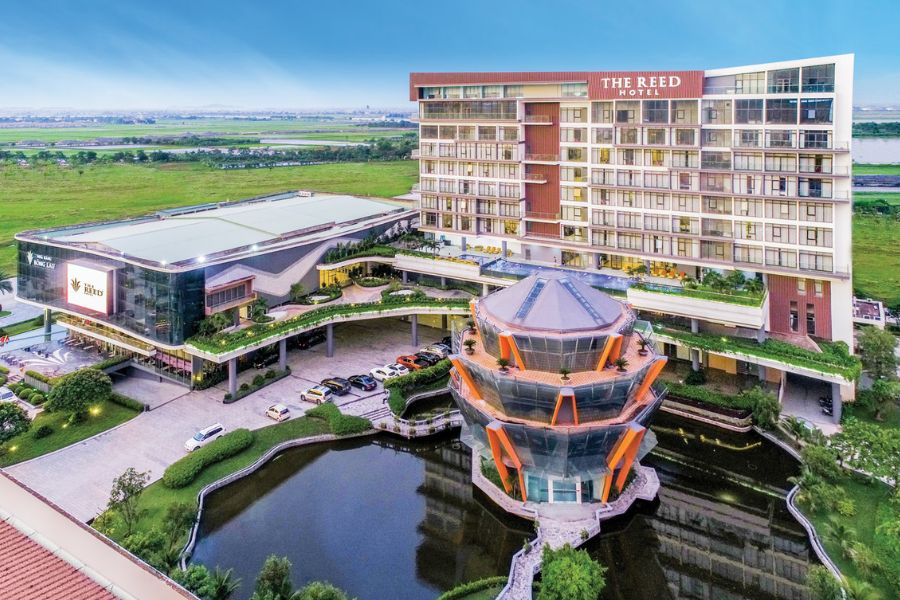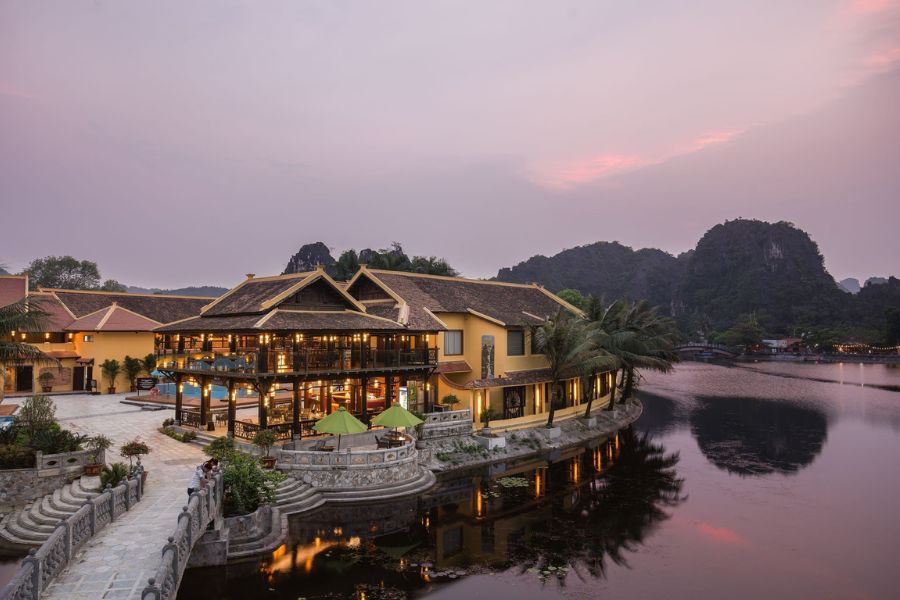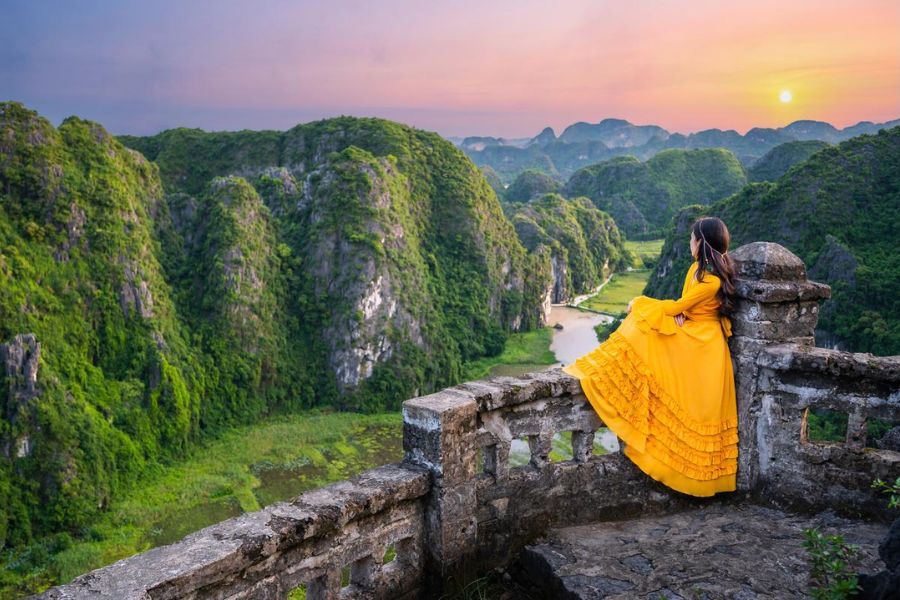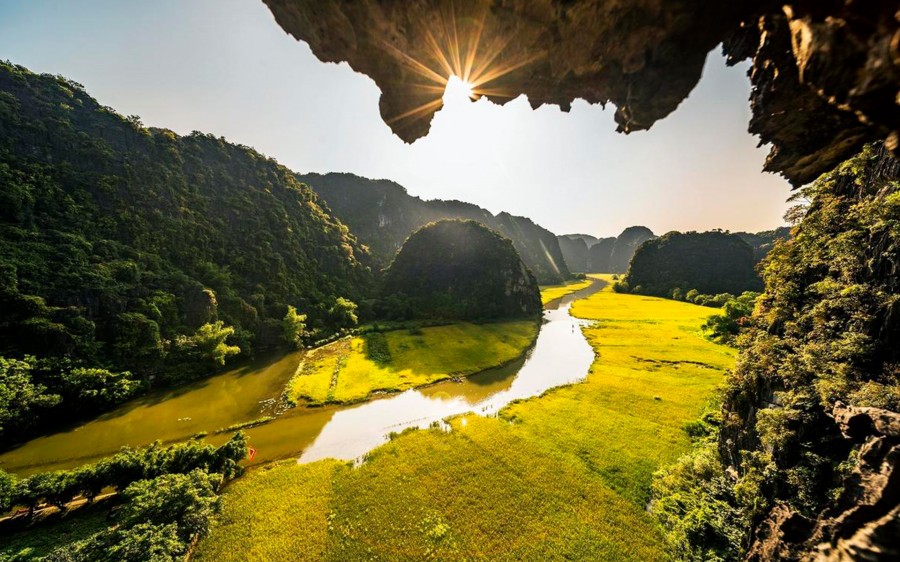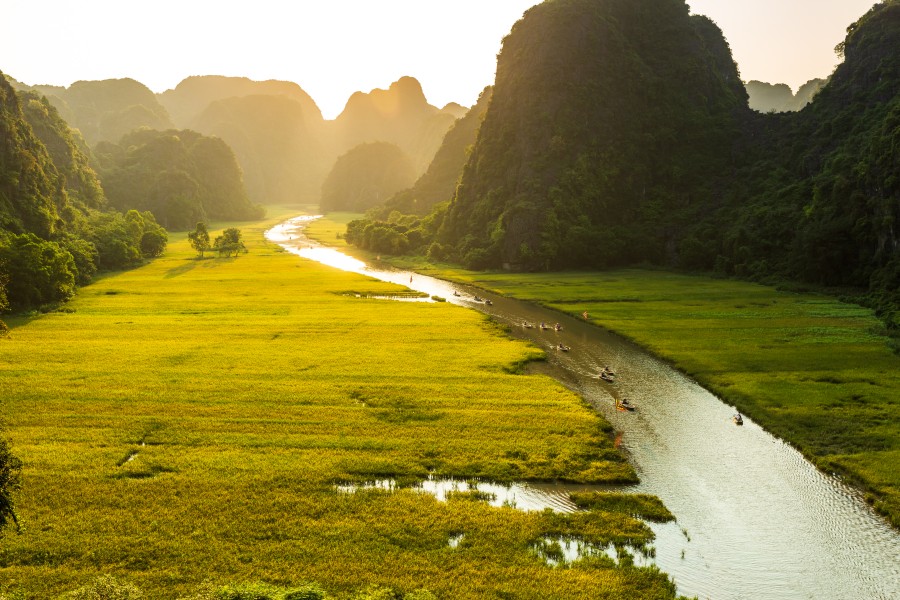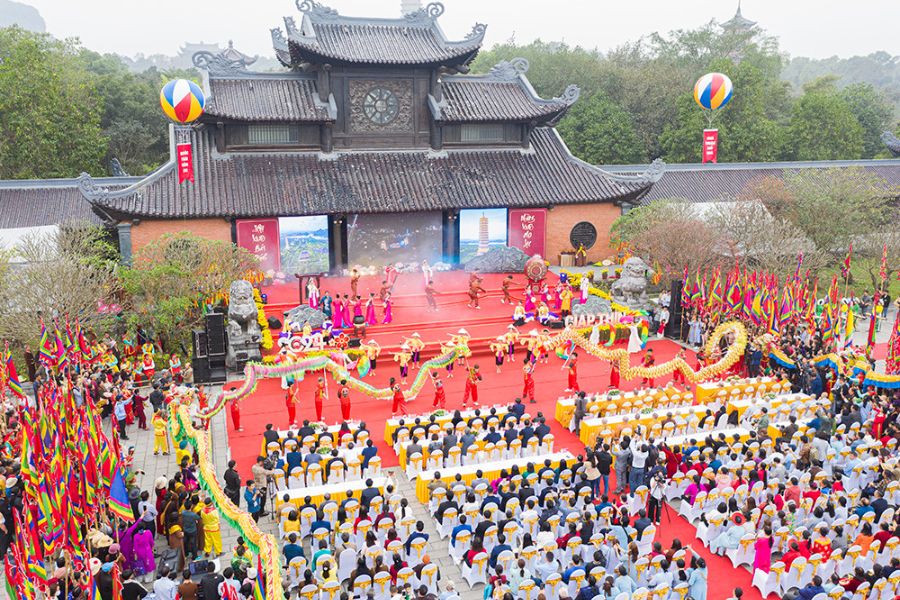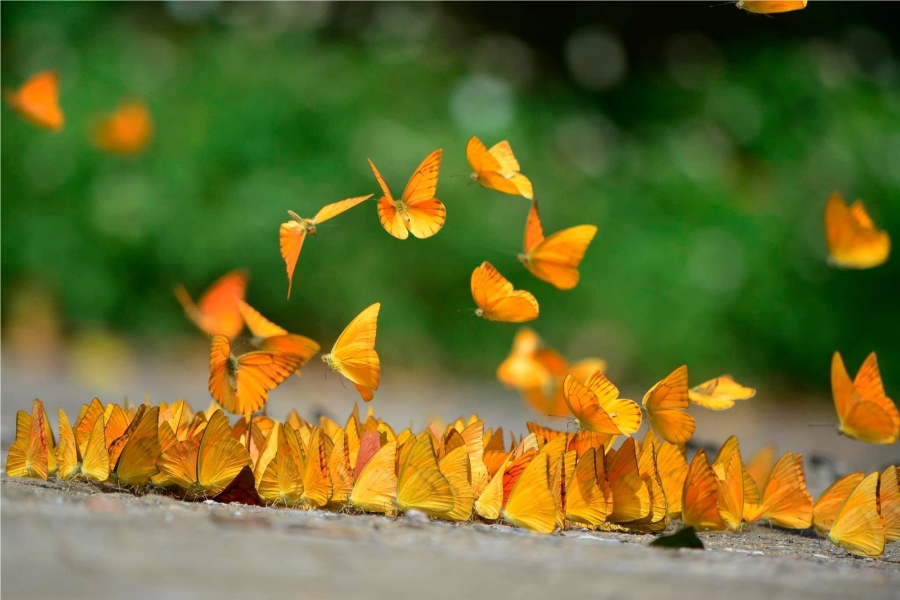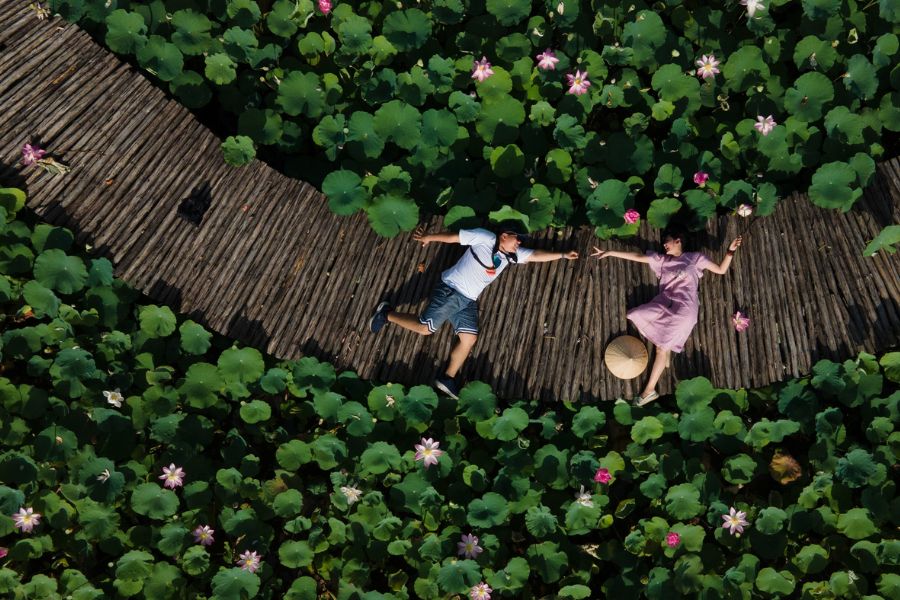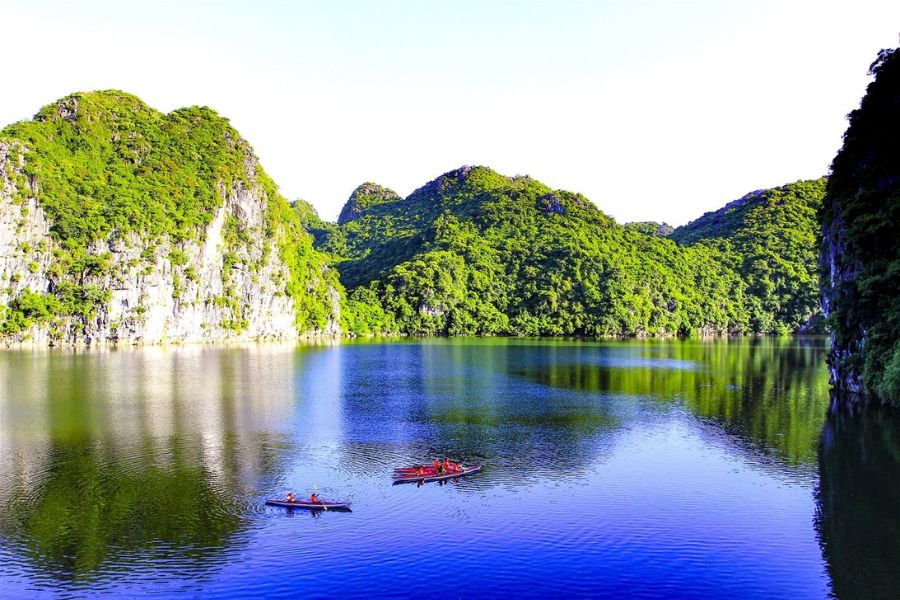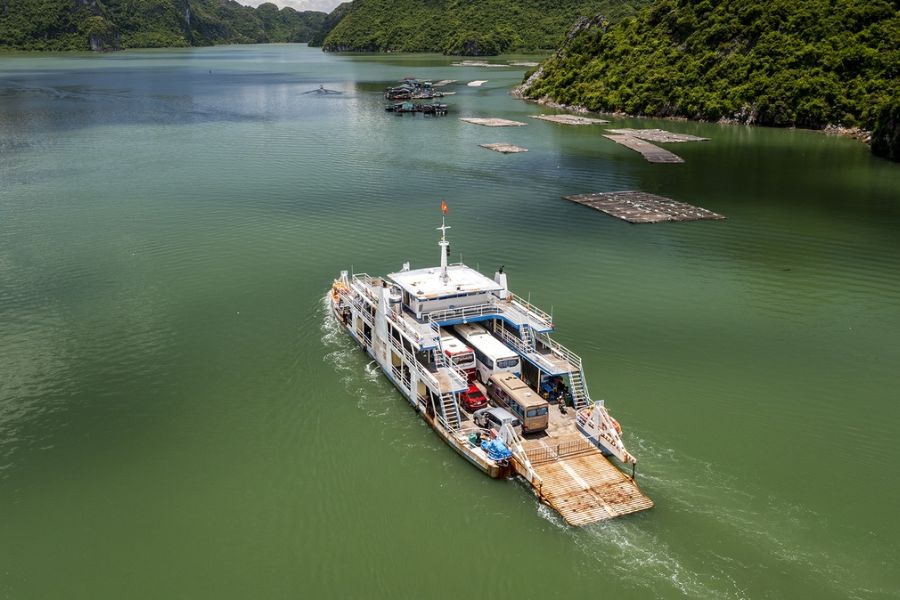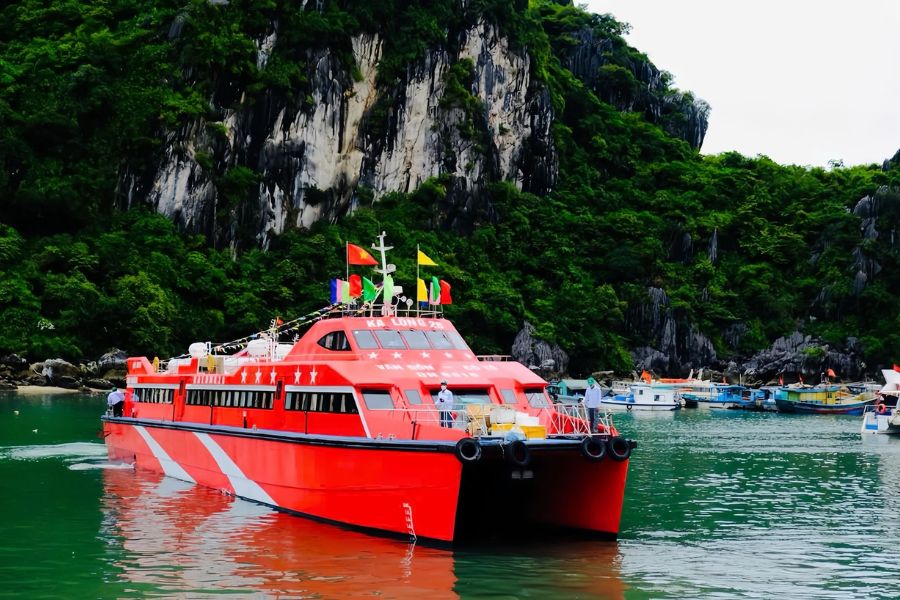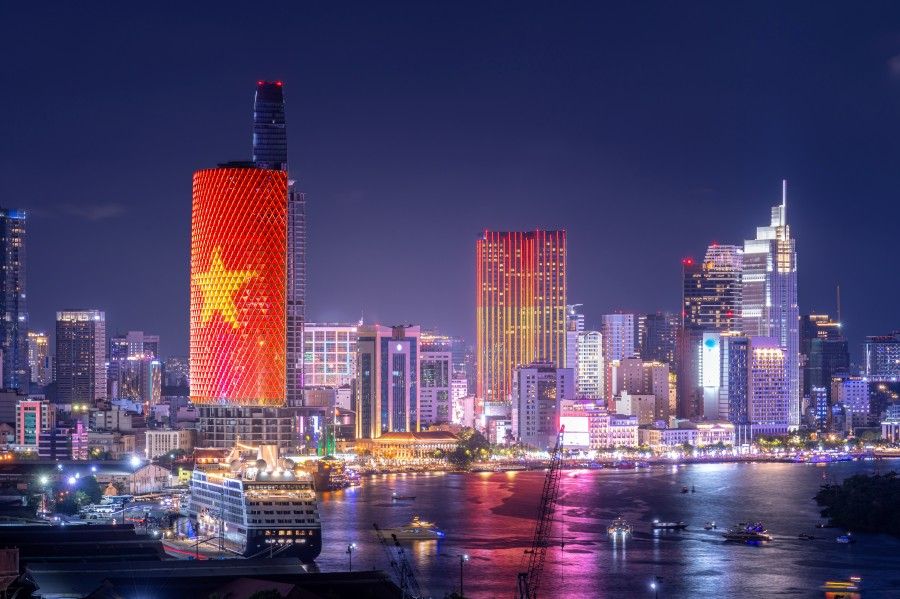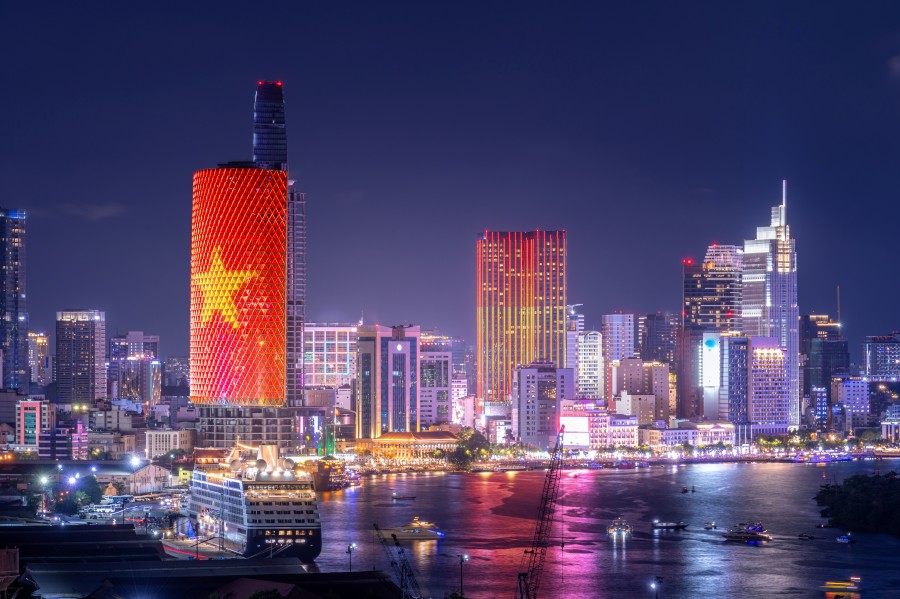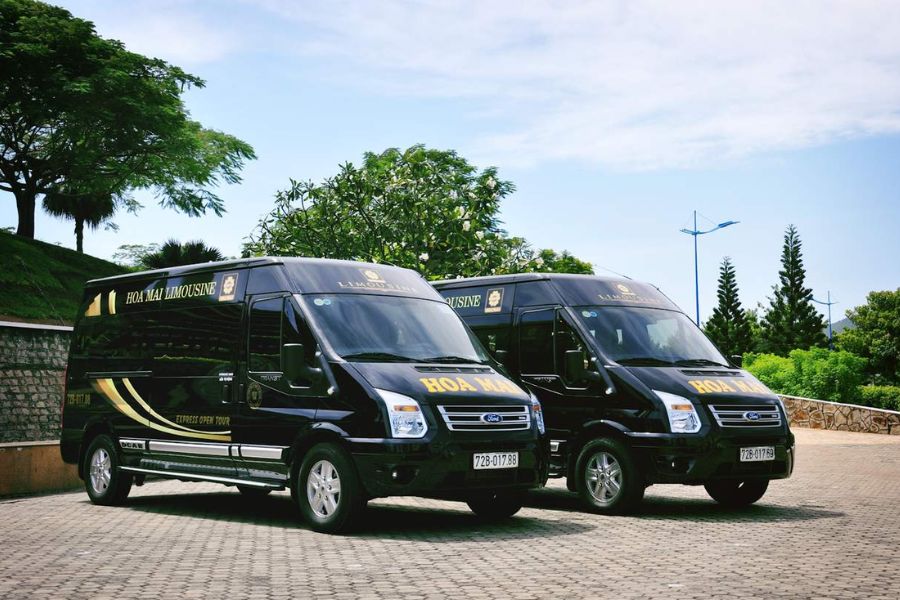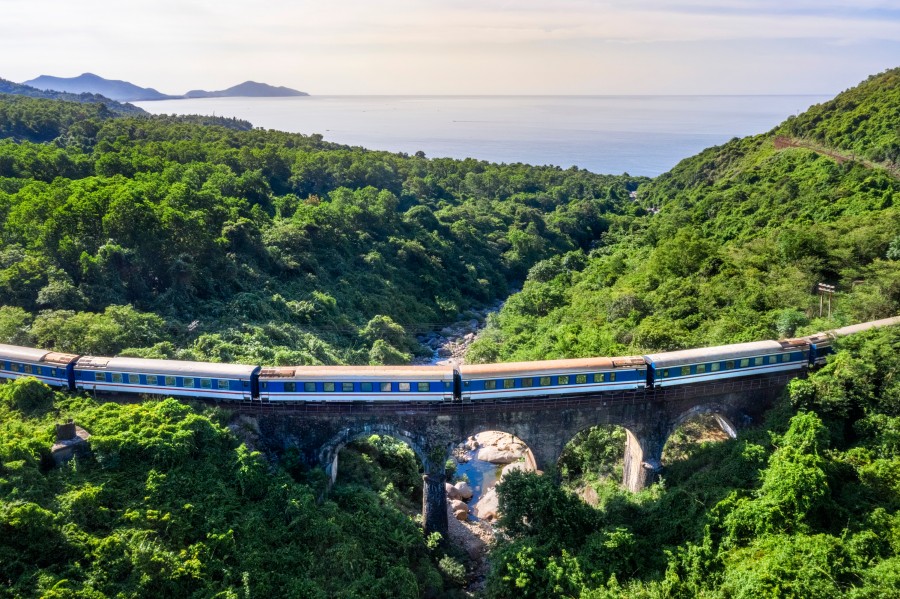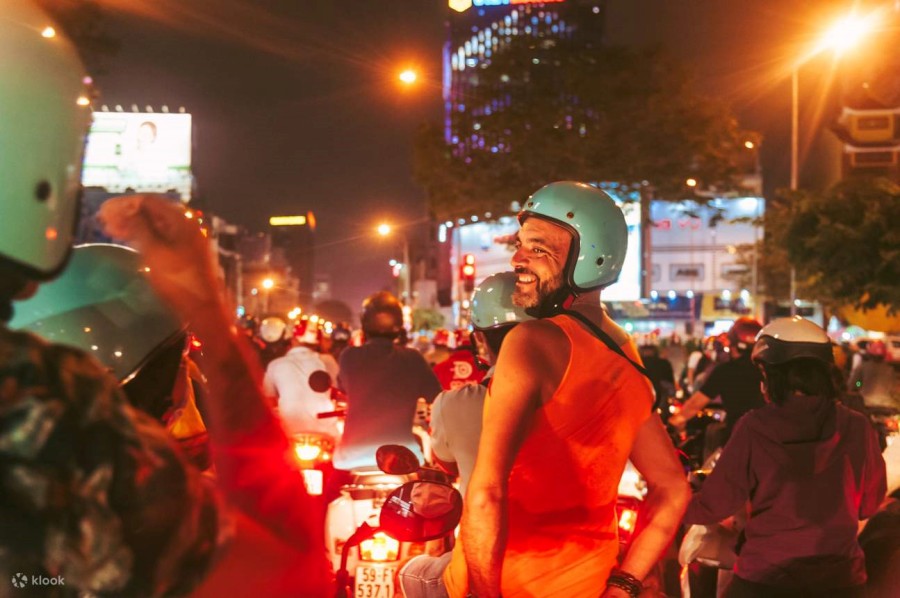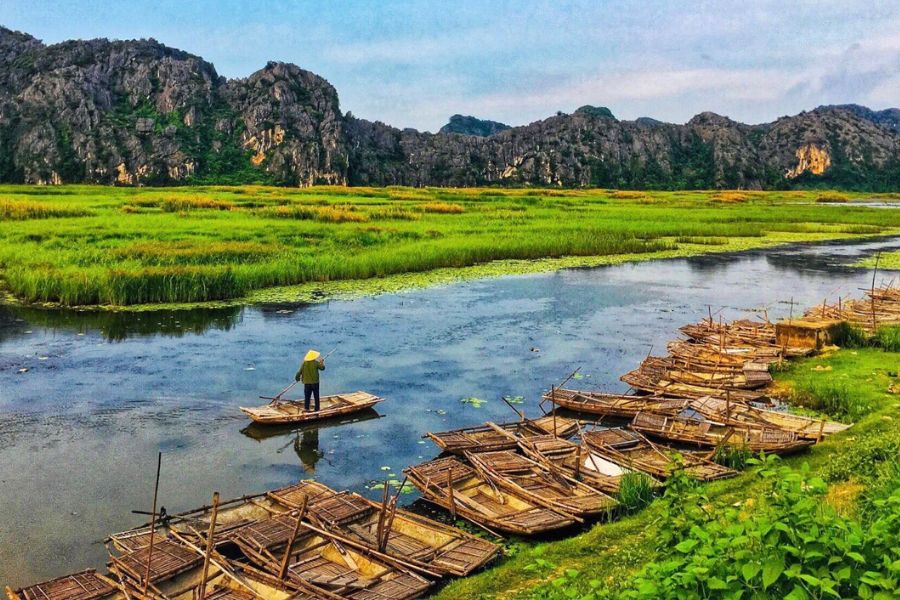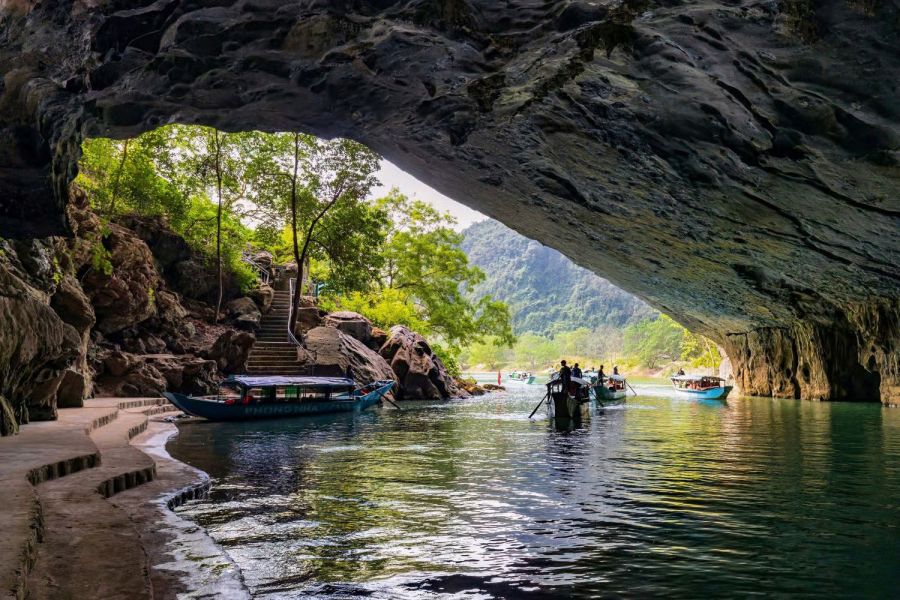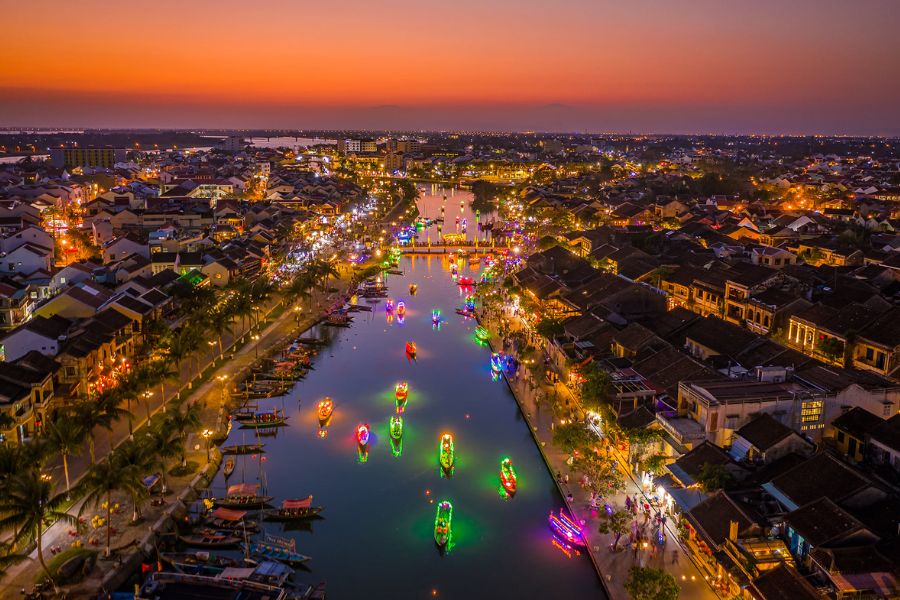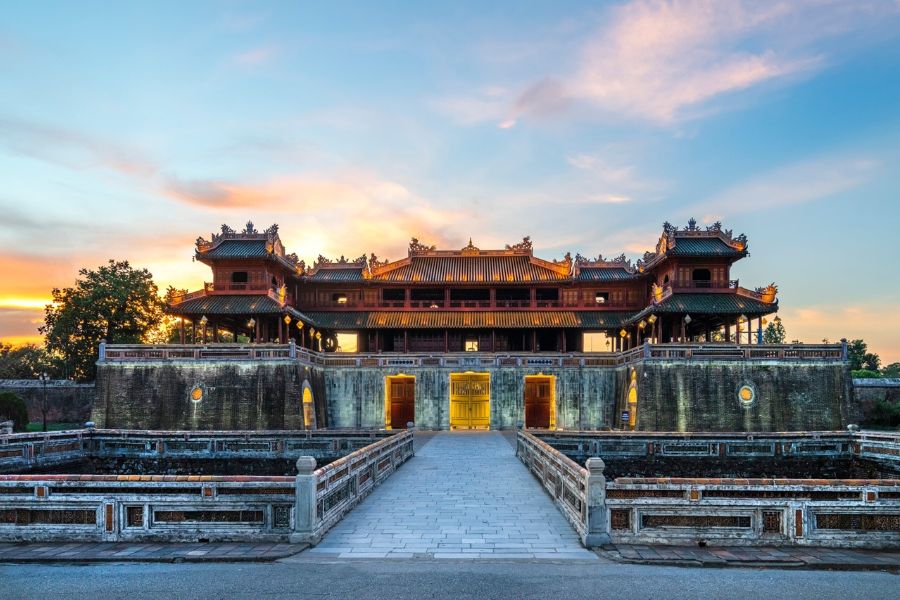Discover Ninh Binh In April: Green Fields & Tranquil Views
Ninh Binh in April is the perfect balance of nice weather and jaw-dropping scenery. This is typically the month rice plantings are a rich green, the skies are clear, and outdoor activities, from boat rides to hiking mountains, are ideal.
Where Is Ninh Binh?
Ninh Binh is a tranquil province in northern Vietnam, about 100 kilometers south of Hanoi. It’s recognized for its beautiful karst landscapes, ancient temples, and peaceful rice fields. It’s no surprise that it is also labeled as “Ha Long Bay on land”.

In April, the area is something special, with new greenery, nice weather, and local festivals. A lot of people travel during this time to appreciate the natural beauty, photos, and enjoy both nature and culture on an everlasting trip into Ninh Binh.
What Is The Weather Like In Ninh Binh In April?
April is a wonderful month to travel to Ninh Binh due to the pleasant temperatures, clear skies, and blooming nature. The weather is mild, with temperatures on average being slightly warmer than the previous months, with daytime temperatures ranging from 24°C to over 30°C, but still not hot! The humidity is tolerable, and there is very little precipitation, allowing for fun excursions outdoors and sightseeing.

There are also fewer rainy days and longer days of sunlight during these times of the year, allowing you to visit famous places like Tam Coc, Trang An, and Hang Mua with ease. The blue sky, fresh greenery, and blooming flowers have created great scenery, including the blooming of the lilies. Check out below for a quick overview of the weather in Ninh Binh during April:
| Weather Aspect | Details |
| Temperature | Daytime Temperature: 24°C – 30°C
Nighttime Temperature: 19°C – 22°C |
| Humidity | Around 75%-80% (moderate humidity) |
| Rainfall | 40-80 mm over 4-5 rainy days (mostly light to moderate rain) |
| Cloud Cover | Partly cloudy to mostly clear skies, cloud cover ranging from 30% to 50% |
| Weather Pattern | Pleasant spring weather with more sunshine, fresh greenery, and ideal conditions for outdoor activities. Occasional short showers may occur, but rarely disrupt travel plans. |
What To See And Do In Ninh Binh In April
April is a pleasant month to arrive in Ninh Binh since it has nice weather and scenic views, in addition to the cultural experiences that are highlighted for this month. Here’s a list of some of the best things to see and do when traveling to Ninh Binh in April:
Take Part In The Hoa Lu Festival
One of the most-awaited events in the month of April is undoubtedly the Hoa Lu Festival, which takes place every year on the 8th, 9th, and 10th of the third lunar month. As a national intangible cultural heritage, this festival is one of the most ancient festivals in Vietnam in honor of King Dinh Bo Linh, who created the ancient capital of Hoa Lu in the 10th century.
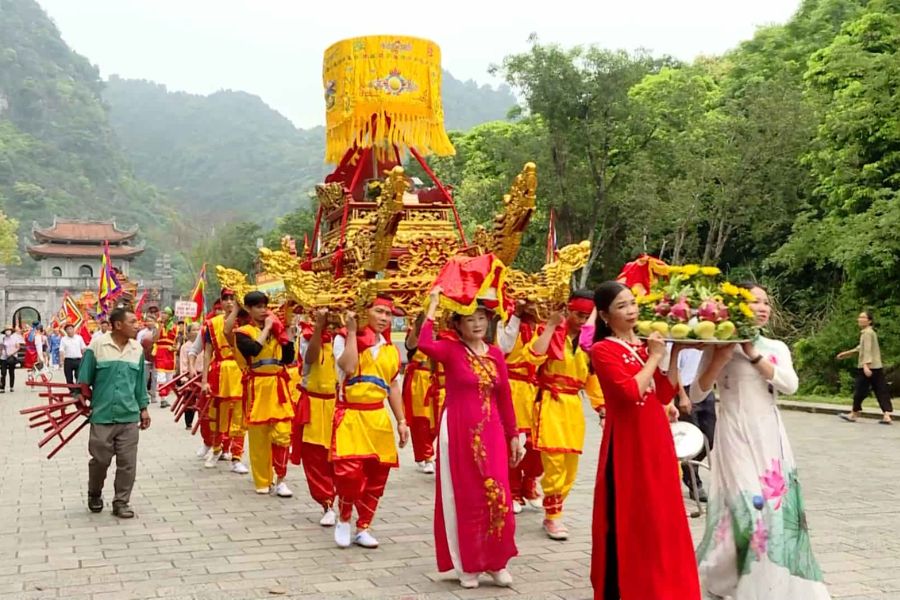
The festival has two identities: the ceremonial and festive. The ceremonial side is intense and solemnly spiritual and ritualistic, consisting of the ceremony’s temple gate opening, incense offerings, water procession, and palanquins of royalty. Audience members can partake in this sacred and special experience that reflects the spirit of the people in this region.
The festive side comes alive! It includes lots of energy, revelry, and fun with traditional folk games, and ancient military reenactments in the “flag dance” ceremony. In addition, there is live music and activity synonymous with local history and the normal excitement of the festival days.
Join The Trang An Festival
Each year, on the 18th day of the third lunar month, the Trang An Festival is held to honor local mountain deities and prominent figures from the Dinh Dynasty. This festival is a product of local spiritual beliefs and is situated in the spectacular Trang An Scenic Landscape Complex.
The boat procession on the river is one of the most thrilling elements of the festival, and it adds to the mystical ambiance of the sacred atmosphere. Visitors can witness the lively decorations, musicians, costumes, and wander through cave systems and ancient temples while aboard a boat. Best of all, it is the perfect opportunity to appreciate the UNESCO site in relation to the culture.
Explore Cuc Phuong National Park
Those who love nature can consider a trip to Cuc Phuong National Park in April. Cuc Phuong National Park is at an intersection between Ninh Binh, Thanh Hoa, and Hoa Binh provinces. It is Vietnam’s first national park, consisting of a vast rainforest, and it is home to stunning flora and fauna!
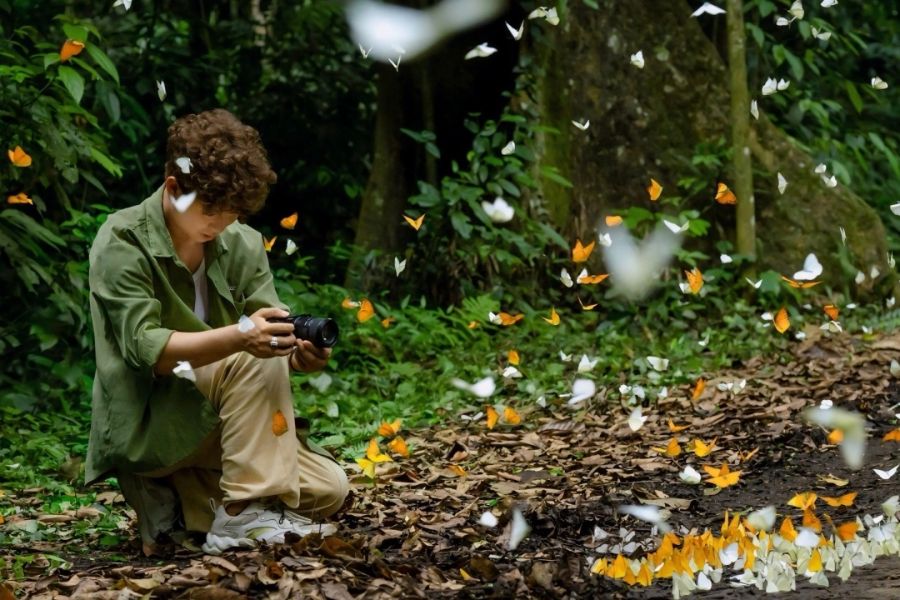
April is a fantastic month to visit because it is cool and pleasant, perfect for trekking and wildlife spotting. What’s magical is the sight of thousands of butterflies floating around the forest paths. You might be fortunate enough to find some rare species, such as the Delacour’s langur, and you can enjoy nature in the most glorious state.
Pray At Bai Dinh Pagoda
Bai Dinh Pagoda is a spiritual destination that attracts visitors throughout the year, and April is a particularly peaceful time to visit. Bai Dinh Pagoda is famous for the size and architecture of the complex, which has a mix of ancient Vietnamese architecture with newer grand buildings.
Many travelers visit not only to admire the splendor of the temple but also to find peace, pray, and enjoy the quietness of the natural surroundings. The large grounds include distant views, exquisite statues, and a relaxed ambiance that is perfect for reflection and repose. Bai Dinh offers something for everyone and is sure to be an unforgettable experience regardless of your spiritual inclinations.
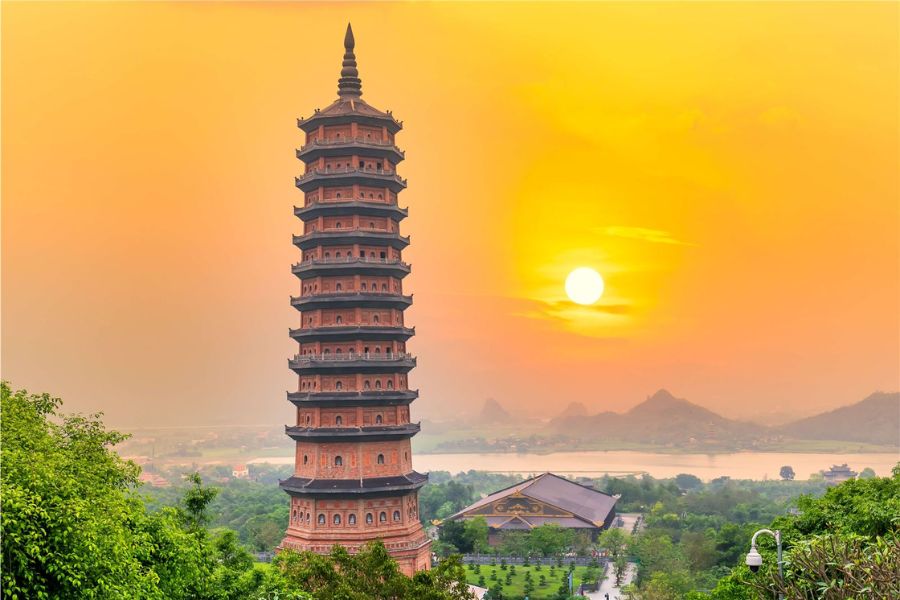
Hike To Mua Cave (Hang Mua)
Nestled at the foot of Mua Mountain, Hang Mua is a sight to behold for explorers and photographers alike. The legend states this is where King Tran watched his dancers, so it makes sense that Mua translates as “dancing.”
After a climb of nearly 500 stone steps, visitors will have spectacular views of Tam Coc’s stunning rice paddies and meandering rivers. In April, the greenery will burst forth for some of the best photos and experiences in Ninh Binh.
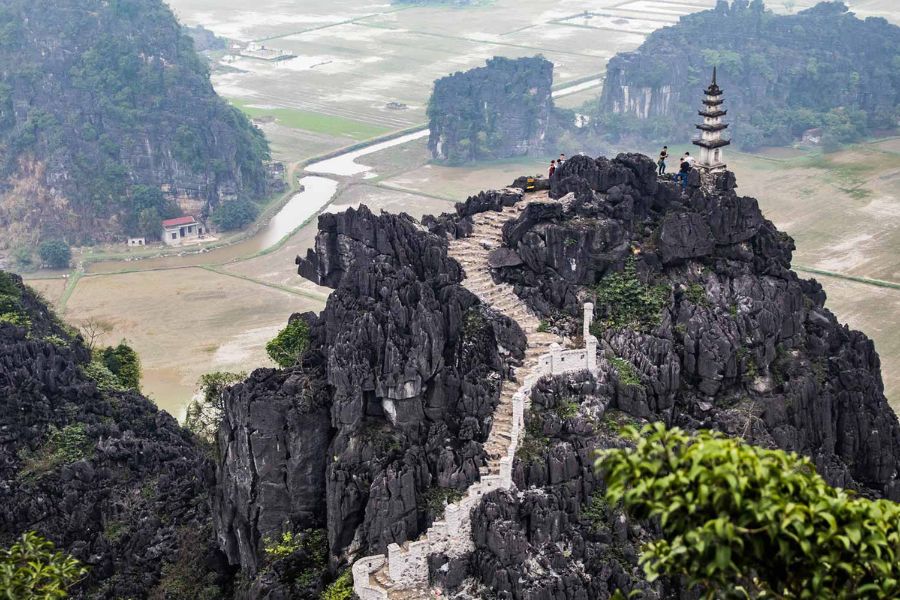
Try Local Cuisine
To properly experience Ninh Binh, visitors should not leave town without trying local dishes. April is an ideal time to take in the street food stalls and local countryside restaurants when the weather is pleasant.
Visitors should try the local specialty of mountain goat meat with Com Chay (smoky, crispy rice). Other delicious dishes to try include Kim Son fish salad, mountain snails, eel vermicelli soup, Yen Mac fermented pork roll, and so on. All of the regional dishes are prepared with local flair and traditional methods that reflect the experience of the region.

What To Pack For Ninh Binh In April
Packing smart can seriously enhance your time in Ninh Binh, particularly with warm and unpredictable weather. April provides a mix of sunshine and shower opportunities, so being prepared will guarantee you’re comfortable and ready to explore.
Lightweight, breathable clothing:
April in Ninh Binh can be warm during the day, which is why going for sweat-wicking materials such as cotton or linen will keep you cool while exploring temples, caves, and countryside trails.
- A light jacket: Evenings can be a little chilly, particularly near water or positioned around the caves, so you might want to bring a lightweight jacket for added warmth without burdening your bag.
- Modest outfits for temples: Whenever visiting a religious site such as pagodas or churches, please dress appropriately or until you are appropriately dressed. Make sure your clothes cover both shoulders and knees to avoid offending anyone.
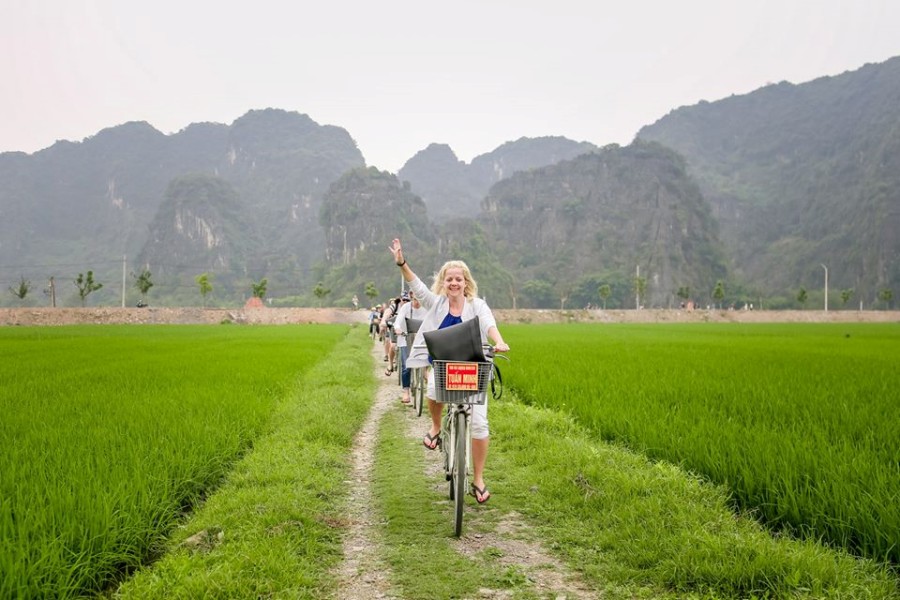
- Comfortable walking shoes: Ninh Binh features many kinds of terrains, from rocky hills to muddy trails, so be sure to wear soft-soled sneakers or flat footwear with ample grip so you can find your feet easily!
- Sunscreen and hat: Springtime UV rays are strong, so remember to put on sunscreen before you head out. A broad-brimmed hat or a cap will also help protect your face from the sun while spending hours outside.
- Snacks: Keep your energy up on full-day excursions and longer boat rides by having some small snacks on hand, such as candy, fruit, or granola bars.
- Personal medication: Whatever your medical needs may be, bring your own supply of medication, as rural areas may not have access to pharmacies.
- Small backpack or day bag: You want a small, lightweight bag for your daily carry so you aren’t burdened down as you enjoy your day.
Travel Tips For Visiting Ninh Binh In April
April is a beautiful time of year to visit Ninh Binh for sightseeing, and while a little upfront work makes for a pleasant travel experience, Ninh Binh is extremely accommodating for travelers. Here are a few travel tips to keep in mind when preparing your visit:
- Even though April isn’t the high travel season, it is still appropriate to reserve your hotel stay early for the best chance of options.
- If you are traveling to Ninh Binh around the Reunification Day Holiday (April 30), expect larger crowds and reserve your accommodations earlier than normal.
- Bring some light snacks and a water bottle, especially for outdoor excursions such as hiking or boat rides.
- April is also lily season in Vietnam! White lilies are blooming all over Ninh Binh, and they will provide some beautiful, dreamy travel photos.
- Lightweight clothing, a hat, and sunscreen will be important to remember to pack, as it could be warm during the day, as spring is just beginning.
- Riding a bicycle or motorcycle is a great option for those who want to see the countryside at a slower pace.
FAQs About Visiting Ninh Binh In April
April is a great time to visit Ninh Binh, and if you are visiting Ninh Binh for the first time, you probably have some questions on your mind, such as: what is the weather like, and do they still do boat tours in this season? To help with your trip planning, Seni World has a list of the most asked questions about visiting Ninh Binh in April:
Are there any unique local festivals or events in April?
Yes. April is usually a month where traditional Vietnamese festivals (such as the Truong Yen Festival and the Hung Kings’ Temple Festival on the 10th day of the third lunar month) take place. These festivals will provide excellent examples of local culture, folk performance, and neighborhood rituals.
Is it safe and convenient to rent a motorbike to explore Ninh Binh?
Yes, one of the most common ways to see Ninh Binh is by renting a motorbike and exploring independently. The roads connecting attractions such as Mua Cave, Tam Coc, and Hoa Lu are scenic and fairly straightforward. However, be sure that you have some level of experience operating a motorbike, always wear a helmet, and obey local traffic laws.

Is there a dress code when visiting pagodas and temples?
When entering a spiritual or religious site, for example, Bich Dong Pagoda or Bai Dinh Temple, you should wear modest clothing. Specifically, cover your shoulders and knees: long pants, midi-skirts, tank tops with a shawl, etc. Good walking shoes are also recommended.
Are the boat tours in places like Trang An and Tam Coc still running in April?
Yes! The river is calm, the air is fresh, and the scenery is beautiful, with greenery and new rice paddies. Boat tours in the early morning or late afternoon are the most ideal for taking pictures and avoiding crowds.
Final Thoughts: Is April A Good Time To Visit Ninh Binh?
Without a doubt, April is one of the best months to come to experience Ninh Binh. The springtime weather is enjoyable, the crowds are smaller than in summertime, and the lilies are in bloom, making April the perfect time for a nice sightseeing trip without trouble. Whether you wish to revel in nature or explore the culture, Ninh Binh has something for everyone in April! Let Seni World help you with your delightful experience!


